Nava Atlas's Blog, page 18
June 21, 2023
Amy Lowell on How a Poet Learns the Craft
The American poet Amy Lowell (1874 – 1925) was best known for a form of poetry called Imagism. She dedicated her career to perfecting her craft as a poet, and was practically an evangelist for the art of poetry writing. Lowell produced poetry prolifically and spoke widely about its art and craft.
Lowell defined Imagism as the “concentration is of the very essence of poetry,” and she aspired to “produce poetry that is hard and clear, never blurred nor indefinite.”
The following is from the preface of her 1914 collection, Sword Blades and Poppy Seed, in which she argues that a poet is not born but made. The writer of poetry must learn what she called their “trade,” comparable to how a cabinet-maker or any other craftsperson first learns technique and then builds upon it.
And now, let’s let Amy Lowell speak for herself, as she does so eloquently, and glean her wisdom on how a poet learns her (or as is the case, his, which is often expressed as the generic default gender in this piece) craft.
. . . . . . . . . .
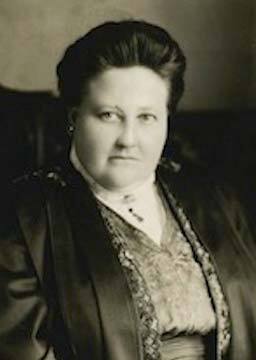
Learn more about Amy Lowell
. . . . . . . . . .
The poet is not born, but madeNo one expects a man to make a chair without first learning how, but there is a popular impression that the poet is born, not made, and that his verses burst from his overflowing heart of themselves.
As a matter of fact, the poet must learn his trade in the same manner, and with the same painstaking care, as the cabinet-maker. His heart may overflow with high thoughts and sparkling fancies, but if he cannot convey them to his reader by means of the written word he has no claim to be considered a poet.
A workman may be pardoned, therefore, for spending a few moments to explain and describe the technique of his trade. A work of beauty which cannot stand an intimate examination is a poor and jerry-built thing.
Poetry should not try to teachIn the first place, I wish to state my firm belief that poetry should not try to teach, that it should exist simply because it is a created beauty, even if sometimes the beauty of a gothic grotesque.
We do not ask the trees to teach us moral lessons, and only the Salvation Army feels it necessary to pin texts upon them. We know that these texts are ridiculous, but many of us do not yet see that to write an obvious moral all over a work of art, picture, statue, or poem, is not only ridiculous, but timid and vulgar.
We distrust a beauty we only half understand, and rush in with our impertinent suggestions. How far we are from “admitting the Universe!”
The Universe, which flings down its continents and seas, and leaves them without comment. Art is as much a function of the Universe as an Equinoctial gale, or the Law of Gravitation; and we insist upon considering it merely a little scroll-work, of no great importance unless it be studded with nails from which pretty and uplifting sentiments may be hung!
For the purely technical side I must state my immense debt to the French, and perhaps above all to the, so-called, Parnassian School, although some of the writers who have influenced me most do not belong to it.
High-minded and untiring workmen, they have spared no pains to produce a poetry finer than that of any other country in our time. Poetry so full of beauty and feeling, that the study of it is at once an inspiration and a despair to the artist …
Finding new and striking imagesThe poet with originality and power is always seeking to give his readers the same poignant feeling which he has himself. To do this he must constantly find new and striking images, delightful and unexpected forms.
Take the word “daybreak,” for instance. What a remarkable picture it must once have conjured up! The great, round sun, like the yolk of some mighty egg, BREAKING through cracked and splintered clouds.
But we have said “daybreak” so often that we do not see the picture any more, it has become only another word for dawn. The poet must be constantly seeking new pictures to make his readers feel the vitality of his thought.
. . . . . . . . . .
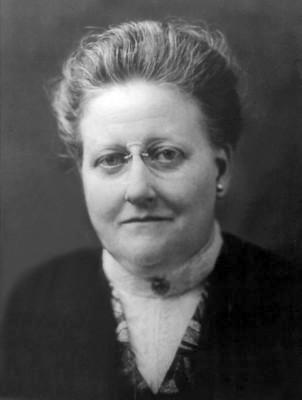
Amy Lowell on her “Vers Libre” poetry
. . . . . . . . . .
Many of the poems in this volume [here Amy Lowell is referring to Sword Blades and Poppy Seed, the book from which this essay comes] are written in what the French call “Vers Libre,”a nomenclature more suited to French use and to French versification than to ours.
I prefer to call them poems in “unrhymed cadence,” for that conveys their exact meaning to an English ear. They are built upon “organic rhythm,” or the rhythm of the speaking voice with its necessity for breathing, rather than upon a strict metrical system.
They differ from ordinary prose rhythms by being more curved, and containing more stress. The stress, and exceedingly marked curve, of any regular metre is easily perceived. These poems, built upon cadence, are more subtle, but the laws they follow are not less fixed.
Merely chopping prose lines into lengths does not produce cadence, it is constructed upon mathematical and absolute laws of balance and time. In the preface to his Poems, Henley speaks of “those unrhyming rhythms in which I had tried to quintessentialize, as (I believe) one scarce can do in rhyme.”
The desire to “quintessentialize,” to head-up an emotion until it burns white-hot, seems to be an integral part of the modern temper, and certainly “unrhymed cadence” is unique in its power of expressing this.
In conclusion: poems must speak for themselvesThree of these poems are written in a form which, so far as I know, has never before been attempted in English. M. Paul Fort is its inventor, and the results it has yielded to him are most beautiful and satisfactory.
Perhaps it is more suited to the French language than to English. But I found it the only medium in which these particular poems could be written. It is a fluid and changing form, now prose, now verse, and permitting a great variety of treatment.
But the reader will see that I have not entirely abandoned the more classic English metres. I cannot see why, because certain manners suit certain emotions and subjects, it should be considered imperative for an author to employ no others. Schools are for those who can confine themselves within them. Perhaps it is a weakness in me that I cannot.
In conclusion, I would say that these remarks are in answer to many questions asked me by people who have happened to read some of these poems in periodicals.
They are not for the purpose of forestalling criticism, nor of courting it; and they deal, as I said in the beginning, solely with the question of technique. For the more important part of the book, the poems must speak for themselves.
Amy Lowell, May 19, 1914.
More by Amy Lowell on this site
The Cremona Violin A Roxbury Garden Lilacs PatternsThe post Amy Lowell on How a Poet Learns the Craft appeared first on Literary Ladies Guide.
June 13, 2023
Zora Neale Hurston’s Seraph on the Suwanee: Views from 1948 & Beyond
Seraph on the Suwanee, Zora Neale Hurston’s fourth and last published novel (1948), was an outlier among her works, which included numerous short stories and ethnographic collections. The reason: it was her only book that was written about white people — specifically, Florida’s “white crackers.”
Exploring the cultural differences between the meek and colorless heroine, Arvay and her handsome, enterprising husband Jim, the novel received mixed-to-positive reviews by the white press.
Some reviewers bent over backwards to praise the fact that a Black writer produced a novel that wasn’t about race issues, bringing to light the lives and dialect of the turpentine people of Florida.
Kirkus Reviews’ succinct 1948 review read: “The colorful Florida ‘cracker’ language holds the mood throughout, and the total effect is one of charm and readability. Recommended.”
On the other hand, The New York Times titled their review “Freud in Turpentine” and wrote: “Arvay never heard of Freud … but she’s a textbook picture of a hysterical neurotic, right to the end of the novel.”
Black reviewers have been generally critical of the novel. I was unable to find full reviews of Seraph on the Suwanee in any Black newspapers from 1948, but commentary about the book by contemporary critics is readily available.
Professor John C. Charles, in a 2009 essay titled “Talk About the South: Unspeakable Things Unspoken in Zora Neale Hurston’s Seraph on the Suwanee” wrote that compared with Their Eyes Were Watching God, Zora’s much lauded and studied, Serpaph:
“… has received a far chillier response and until recently often condemned or dismissed out of hand … Seraph has tended to baffle and disturb even Hurston’s most devoted readers. Critic Mary Helen Washington, for example, dismisses Seraph as ‘an awkward and contrived novel, as vacuous as a soap opera.’ And Bernard Bell expels it from his influential study on the African American novel because ‘[it] is neither comic, nor folkloric, nor about Blacks.’
Late literary critic Claudia Tate, in a 1997 essay titled “Zora Neale Hurston’s Whiteface Novel” wrote, “Despite the tremendous popularity of the works of Zora Neale Hurston over the last two decades, Seraph on the Suwanee is still a marginal work.”
Zora dedicated the book “To Marjorie Kinnan Rawlings and Mrs. Spessard L. Holland with loving admiration.” Find a full plot summary and character list here.
Following are three 1948 sample reviews from the perspective of white reviewers.
. . . . . . . . .
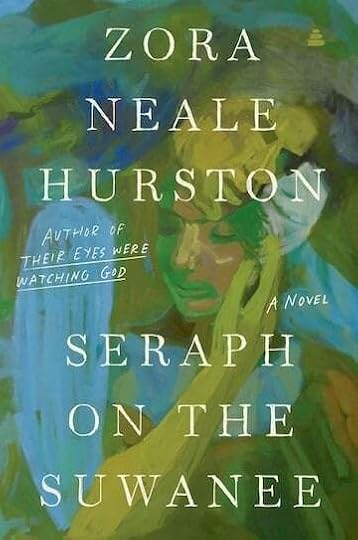
. . . . . . . . .
In the Turpentine CountryFrom the original review by Virginia Oakey in the Richmond (VA) Times-Dispatch, October 24, 1948: Arvay Meserve, heroine of Seraph on the Suwanee, is not a woman one would choose to spend a single evening with, for she is without humor or perception and suffers from pathological timidity. Yet the story of her life is definitely worth an evening or two.
This unenviable creature was born in the turpentine country of West Florida where life, as described by Miss Hurston, is a mean and degrading mistake. A few chapters into the book, Harvey is seduced by and married to (in the space of a summer afternoon) the most sought-after young man in the county, Jim Meserve.
Arvay’s suffering from her near-psychopathic feeling of inferiority is only increased by her excellent marriage. She takes a feeling of guilt to her wedding bed, for she has lived in mental adultery with her sister’s husband for several years. Now she lives in fear of the exposure of her secret.
The first of Arvay’s children is an imbecile. She believes this to be her punishment, so she decides the boy must remain with her — a decision that results in one of the most tragic incidents in the story.
Two other children are born to Arvay and her “high-toned, independent, money-making” husband. They are handsome, intelligent children; Arvay never believes herself worth of them, nor of her husband.
This goes on for twenty years. Jim Meserve’s patience is exhausted; yours certainly will be, too. However, those years aren’t without drama, and occasionally, in spite of Arvay, considerable humor. Arvay is forced to face herself. This she does with her customary cowardice until a death and a storm intervene —and she is equal to both.
Miss Hurston writes authoritatively of the “teppentine” (turpentine) country, the citrus belt, and life aboard a shrimping boat, all of which provide a background for Arvay’s “high-Christian” humility. The author has caught the patois of those areas; it’s colorful, often crude, and frequently poetic.
She writes of “the raw-head-and-bloody-bones of lonesomeness” and of a young girl dressed in her best clothes “looking as if she had wallowed in a rainbow.” In one instance “the hours stumbled by on rusty ankles.” In another, hours were like “raw, bony, homeless dogs — whining of their emptiness.”
“Teppentine” people do not say “She has eaten humble pie.” They say, “She has been to hell’s kitchen and licked out all the pots.” Indirect action they describe as “hitting a straight blow with a crooked stick.” A person who is living beyond his means is “giving a mighty high kick for a low cow.”
Despite Arvay’s meagre spirit, Miss Hurston has written a book that is extremely pleasant company.
Way Down Upon the Suwanee River
From the original review of Seraph On The Suwanee by Lewis Gannett in The Mirror (Los Angeles), October 18, 1948: I wish that Zora Neale Hurston had more to say in her new novel, for I love the speech rhythm with which she can make anything she writes a delight.
This is a story about a Florida cracker girl named Arvay and her ways of loving Jim Merserve. You could say about Miss Hurston’s story what Jim says about Arvay: she “took long enough to stumble round the teacup to get to the handle.”
Sawley on the Suwanee, where courting was public
Down in Sawley on the Suwanee, courting was public. The doings were something like a well-trained hound dog tackling a bobcat, and everyone looked on.
Jim Meserve had a face full of grin, and when he was around, Arvay just couldn’t make her face look like she’d been feasting off green persimmons. For the first time in her life, her vanity put on a little flesh. While Jim was talking, she almost forgot that she had given up the world after her sister snatched the Rev. Carl Middleton away from her.
Sawley, they said, was a town that wore out the knees of its breeches sliding to the Cross and wore out the seat of its pants backsliding, but outside of Arvay, few Sawleyites got thin thinking about the Reverend Middleton.
Some of them said you couldn’t even raise a tune if you put a wagonload of good compost under him and ten sacks of commercial fertilizer.
The world seems sad and dreary
Arvay just couldn’t believe how happy she was, married to Jim. She couldn’t get over what Jim called that old missionary distemper. She was afraid of admitting she was herself. And there came a time when Jim shouted at her that he didn’t want a standstill kind of love; he wanted a knowing and doing love, and Arvay loved like a coward.
Sometimes Miss Hurston, whose father was Mayor of the all-Negro town of Eatonville, Florida, hasn’t much use for people of any color who lack get-up-and-go and spend their spare time bewailing bad luck.
Lightning bugs in daytime
Arvay tries to disapprove of Jim, but her resolutions are:
“… just like the lightning bugs holding a convention.They met at night and made scorning speeches against the sun and swore to do away with it and light up the world themselves. But the sun came up the next morning and they all went under the leaves and owned up that the sun was boss-man in the world.”
Arvay was always throwing the rabbit into the briar patch.
Unfortunately, the lightning bugs don’t hold a convention on every one of Miss Hurston’s pages her boss-man is a little too perfect, and the Rev. Carl Middleton sits a little lower in the grass than the lowest insect along tobacco road. Even with Miss Hurston’s imagery flashing all about him, one gets a little tired of Jim Meserve’s he-man loving and Arvay’s stumbling around the teacup.
One hopes that Miss Hurston will put into her next novel more solid soup stock. She has a rare talent for cooking with words — as she proved with Jonah’s Gourd Vine and Mules and Men. But in Seraph On The Suwanee, she is wasting it on wilted turnip greens.
. . . . . . . . .
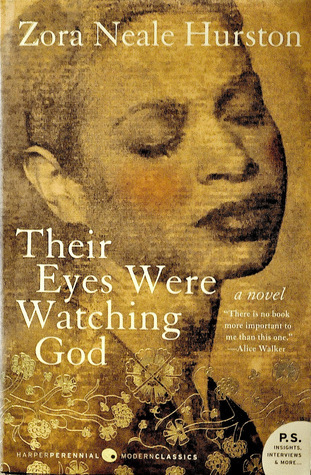
Books by Zora Neale Hurston: Fiction, Folklore & More
. . . . . . . . .
A Novel About Poor Whites in the South, Without a Racial IssueFrom the original review by Carter Brooke Jones in The Evening Star, Washington DC, October 17, 1948: It might be pointed out, before considering other merits of this novel, that Miss Hurston has done at least one thing noteworthy in these times.
She has written about the much-chronicled poor whites of the South without condescension, pity, or sentimentality.
She has presented a group of poor Southerners as recognizable human beings. Her characters aren’t fools because they have little formal education and speak a form of English that approaches a patois.
Some of them, indeed, are exceedingly shrewd, make money, and do well enough for themselves. Others are dumb, lazy, and hopeless. But so are some college graduates.
If the successful ones are underprivileged, they haven’t heard about it. They aren’t oblivious to the advantages of schooling, and most of their sons and daughters go to college. Their problems and emotions are pretty much those of people everywhere, which may come as a surprise to readers of Caldwell, Faulkner, and their disciples.
Miss Hurston has managed to write of the contemporary, or recently past South without bringing in a lynching or touching on the race problem. In fact, the friendship of a Southern white man and a black man is an outstanding phase of this story. All this sidestepping of social and economic issues no doubt will disturb Marxist critics if they bother to examine the book.
In the citrus belt
The story starts in a little town on the West Coast of Florida when Arvay Henson, daughter of a bedraggled poor family abandons her intentions of dedicating her life as a Baptist missionary and marries Jim Meserve. Jim is the strongest and best-looking young man in the turpentine camp. He moves Arvay and their baby south to the citrus belt.
Before long, he is the owner of a nice piece of land. He ends up owning a fleet of fishing boats, a citrus grove, and part of a swanky real estate development.
It’s essentially the story of Arvay and her struggle to understand and utilize a world strange to her. She is narrow and afraid of anything new. Jim, with little more education than she had, is daring, clever, and resourceful. He is also domineering, and Arvay sees only his obvious traits, overlooking the sacrifices he makes and the changes he takes for her and their children.
Years pass before she appreciates Jim, and her awakening comes almost too late, for his patience has worn out at last.
What about the war?
Earthy humor and the pathos of groping and misunderstanding mingle in Miss Hurston’s narrative. A novel of considerable merit should be allowed some deficiencies. In Seraph on the Suwanee, some minor episodes are overdeveloped, while others are passed over quickly.
The characters she describes might have had little interest in the outside world, but sure more than she indicates. The story starts in the early 1900s and continues for more than twenty years; yet the First World War, which must have had a measure of influence on some of the people in the story, isn’t even mentioned.
More about Seraph on the Suwanee Zora Neale Hurston and the WPA in Florida On the official Zora Neale Hurston website Reader discussion on Goodreads
The post Zora Neale Hurston’s Seraph on the Suwanee: Views from 1948 & Beyond appeared first on Literary Ladies Guide.
June 12, 2023
Six Novels by Shirley Jackson: Psychological Thrillers by a Master
American author Shirley Jackson (1916 – 1965) was known for fiction and nonfiction works that have influenced generations of writers who came after her. Presented here are the six novels by Shirley Jackson published in her lifetime. If you’re looking for where to begin with Shirley Jackson’s books, start anywhere — they’re all engrossing reads.
Jackson remains best known for “The Lottery” (1948), her widely anthologized (and also widely banned) short story. This controversial work, published the same year as her first novel, put her on the literary map.
It’s not easy to categorize Jackson’s work. Psychological terror or thriller may come close, if one considers that Stephen King and Neil Gaiman have cited her as an influence. Her six novels and scores of short stories uncover the evil and ugliness that lurk just under the surface of propriety and social mores.
In addition to her six novels, she wrote dozens of short stories and was also known for her wryly humorous (and idealized) accounts of family life, Life Among the Savages and Raising Demons.
Jackson’s two last finished novels, The Haunting of Hill House (1959) and We Have Always Lived in the Castle (1962) are considered her masterworks. Following each of the brief introductions to the novels, you’ll find a link to a full review and/or analysis.
. . . . . . . . . .
The Road Through the Wall (1948)

The Road Through the Wall was Shirley Jackson’s first novel. That was also the year when her short story, “The Lottery,” was published, making her instantly famous (as well as infamous).
Jackson claimed that the novel was loosely based on her childhood in a well-to-do neighborhood in California. Admitting that it was somewhat of a revenge novel, she asserted that a first novel’s purpose, after all, was to get back one’s parents.
As in several of Jackson’s stories and novels, we do indeed see the world – and in this case Pepper Street is its own world – largely through children and their mothers; Jackson didn’t – possibly couldn’t – ever write a sympathetic male character.
Fourteen-year-old Harriet lives in a middle-class suburb in California – not completely unlike the one where Jackson herself was born – where everyone knows everyone else’s business.
This a chamber piece where many characters have an equal part and Harriet is simply one of the actors in the drama. Nevertheless, she is drawn in great detail and the novel does show her awkwardly coming of age, at least in one sense.
An analysis of The Road Through the Wall.
. . . . . . . . . .
Hangsaman (1952)
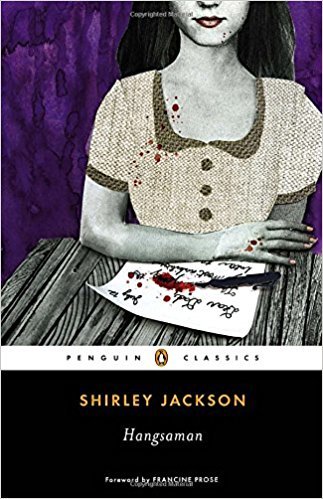
Shirley Jackson occasionally turned to true crime news stories as jumping-off points for her novels of psychological terror and suspense. This was apparently the case for her second novel, Hangsaman (1951).
Jackson, her husband, and their four children were living in North Bennington when 18-year-old Bennington College freshman Paula Jean Weldon disappeared. She went out for a hike on December 1, 1946, and simply never returned.
There were, and have since been, theories about what might have happened to Weldon, but neither she —nor her body — were ever found.
Hangsaman is the dark and unsettling tale of a young woman named Natalie Waite as she sets off into the world of college. This brief synopsis is from the 2013 reissue edition (Penguin):
“Seventeen-year-old Natalie Waite longs to escape home for college. Her father is a domineering and egotistical writer who keeps a tight rein on Natalie and her long-suffering mother. When Natalie finally does get away, however, college life doesn’t bring the happiness she expected. Little by little, Natalie is no longer certain of anything—even where reality ends and her dark imaginings begin.”
A review of Hangsaman An analysis of Hangsaman. . . . . . . . . .
The Bird’s Nest (1954)
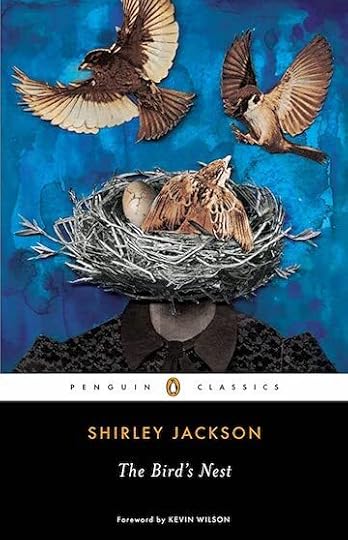
Elizabeth Richmond, the novel’s main character, has multiple personality disorder. As she splinters, these beings become Bess, Beth, and Betsy. You’ll find a thorough plot summary here.
In this post, we’ll see three of the reviews of the novel, which received wide coverage. Views of the novel were decidedly mixed. Some of the reviews found the subject fresh and intriguing; others found Jackson’s treatment of a complex psychological condition too simplistic, and the resolution inexplicably neat.
The multiple personality trope was pretty unique at the time, leaving some reviewers baffled by the shifting personalities. The New York Times reviewer opined that the plot of The Bird’s Nest was “too bizarre for the necessary suspension of disbelief.”
Contemporary reconsiderations have been kinder to the novel. In a 2014 review in Flavorwire, Tyler Coates wrote, “The Bird’s Nest is a monumental work, not just for spurring a renewed interest into the multiple-personality story, but because its inventive storytelling structure gives a powerful look at a young woman trapped within her own body and mind.”
Three 1954 reviews of The Bird’s Nest
. . . . . . . . . .
The Sundial (1958)

Though The Sundial was generally well received, Jackson had yet to reach her peak with her fourth novel. A 1958 Chicago Tribune review called it “entertaining, absorbing, and disturbing,” and encapsulated the plot succinctly:
“An oddly assorted group dwells in the Halloran mansion, on a vast, walled estate. It is dominated ruthlessly by Mrs. Halloran, wife of the sickly heir of the founder, who may have murdered her own son to assure her control. Assorted relatives, a governess, and a young man of vague duties are the original entourage to which some random members are added.
To spinsterish Aunt Fanny, the founder’s daughter, a revelation is vouchsafed from her deceased father. The dreadful, fiery end of the world is imminent. All those in the safety of the father’s house will survive, to emerge to a new world.
Through successive revelations, the truth of this apocalypse impresses itself on all the group. The novel follows their preparations for the majestic even as the hour draws near. The suspense becomes great, the events are surprising, but how Miss Jackson plays out her end game is classified information.”
. . . . . . . . . .
The Haunting of Hill House (1959)

The Haunting of Hill House is a novel in the gothic horror genre, though it might be more accurately described as a literary ghost story. A finalist for the National Book Award, it’s a masterful story of psychological terror.
Hill House is a mansion built by Hugh Crain, who long ago passed away. Dr. John Montague, an investigator of the supernatural, wishes to conduct a study there to find the existence of spirits.
With him are three young companions including Luke, the young heir to the mysterious house, and two young women, Eleanor and Theordora. Eleanor is unquestionably the central character, and a close reading of the novel is an exploration of her essential loneliness and psychological breakdown.
Numerous contemporary writers have sung the praises of The Haunting of Hill House and/or cited it as an influence on their own work. Here is Neil Gaiman, in a New York Times interview (2018):
“The books that have profoundly scared me when I read them … But Shirley Jackson’s The Haunting of Hill House beats them all: a maleficent house, real human protagonists, everything half-seen or happening in the dark. It scared me as a teenager and it haunts me still, as does Eleanor, the girl who comes to stay.”
A review and analysis of The Haunting of Hill House
. . . . . . . . .
We Have Always Lived in the Castle
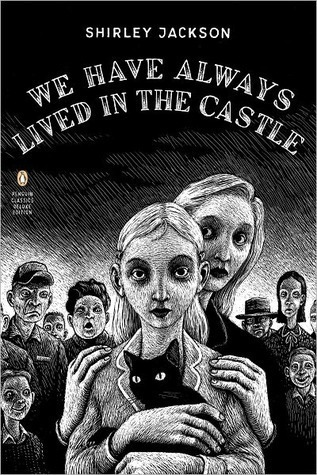
We Have Always Lived in the Castle (1962) was Jackson’s last published work in her lifetime. The narrator, Mary Katherine “Merricat” Blackwood, lives with her sister and uncle on an isolated estate in rural Vermont.
The Blackwoods have been shunned by the neighbors in the nearby village due to a tragedy — murder by poisoning — that occurred some years earlier. This critically acclaimed novel has been an inspiration to authors that came after who write in the thriller and mystery genres.
The opening paragraph of We Have Always Lived in the Castle is iconic, and pure Shirley Jackson:
“My name is Mary Katherine Blackwood. I am eighteen years old, and I live with my sister Constance. I have often thought that with any luck at all I could have been born a werewolf, because the two middle fingers on both my hands are the same length, but I have had to be content with what I had. I dislike washing myself, and dogs, and noise. I like my sister Constance, and Richard Plantaganet, and Amanita phalloides, the death-cup mushroom. Everyone else in my family is dead.”
A review of We Have Always Lived in the Castle An analysis of We Have Always Lived in the Castle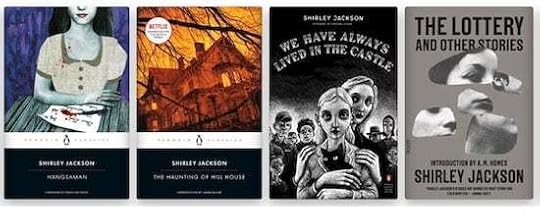 Shirley Jackson’s books on Bookshop.org*
Shirley Jackson’s books on Bookshop.org*
. . . . . . . . . .*This is a Bookshop.org affiliate link. If a product is purchased by linking through, Literary Ladies Guide receives a modest commission, which helps us to continue to grow.
The post Six Novels by Shirley Jackson: Psychological Thrillers by a Master appeared first on Literary Ladies Guide.
June 10, 2023
The Bird’s Nest by Shirley Jackson — three 1954 reviews
Of Shirley Jackson’s six novels completed within her lifetime, The Bird’s Nest (1954) is less known and read than her 1948 short story, “The Lottery,” or her late novels, The Haunting of Hill House (1959) and We Have Always Lived in the Castle (1962).
Yet like all of Jackson’s works, this one is deserving of reconsideration. Though just forty-nine when she died, she left behind a large body of fiction and nonfiction works that have influenced generations of writers who came after her.
Elizabeth Richmond, the novel’s main character, has multiple personality disorder. As she splinters, these beings become Bess, Beth, and Betsy. You’ll find a thorough plot summary here.
Presented here are three reviews of this widely publicized novel, which reflect the decidedly mixed coverage. Some critics found its subject fresh and intriguing; others found the treatment of a complex psychological condition too simplistic and the resolution inexplicably neat.
Mixed reviews, and a contemporary reconsideration
Kirkus Reviews offered more of a brief plot summary than a substantive review in 1954, but concluded that for “a special audience, an exploratory of precarious and unpredictable variations, this has a certain fascination.”
The multiple personality trope was pretty unique at the time, leaving some reviewers baffled by the shifting personalities. The 1957 film (based on the book of the same year) The Three Faces of Eve, and later Sybil (1973) and its subsequent television movie would bring the subject to the mainstream.
The New York Times reviewer opined that the plot of The Bird’s Nest was “too bizarre for the necessary suspension of disbelief.” He and other reviewers wondered if psychiatric disorder were a worthy subject for fiction in the first place. Jackson was perturbed by reviewers’ interpretation of Elizabeth’s condition as schizophrenia, which isn’t what she had intended.
Contemporary reconsiderations have been kinder to the novel. In a 2014 review in Flavorwire, Tyler Coates wrote, “The Bird’s Nest is a monumental work, not just for spurring a renewed interest into the multiple-personality story, but because its inventive storytelling structure gives a powerful look at a young woman trapped within her own body and mind.”
A misbegotten film adaptation
1957 saw the release of the film adaptation of The Bird’s Nest, retitled Lizzie. Jackson was thrilled with her first sale of film rights but was unhappy with the outcome. Jackson called the movie “Abbott and Costello meet a multiple personality.”
Ruth Franklin, in Shirley Jackson: A Rather Haunted Life, wrote:
“… She found it more unnerving than she expected to have her characters come to life on the screen in a way utterly different from how she had imagined them …
Elizabeth, transformed into ‘Lizzie’ (a character that does not exist in the novel), becomes a drunken slut; Aunt Morgen is bawdy and flirtatious; and the doctor cures his patient with an incoherent combination of Rorschach inkblots, Freudian analysis, and Jungian therapy.
The film was rushed to open ahead of The Three Faces of Eve. But while Eve went on to win an Academy Award, critics were lukewarm on Lizzie. The Newsweek reviewer offered an apt summary: ‘Major mental muddle melodramatized.’”
Following are three reviews that represent varying views of critics. As you’ll see, even these reviews are neither pans nor raves, but fall somewhere in the mixed range. In the tradition of Dr. Jekyll and Mr. Hyde, recognizing that a human can contain multitudes, Shirley Jackson’s mid-twentieth-century eye view is well worth exploring.
. . . . . . . . . .
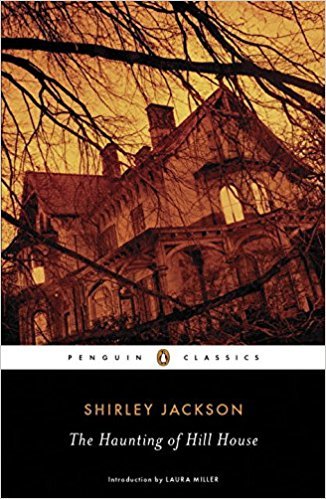
See also: The Haunting of Hill House
. . . . . . . . . .
From the original review by Florence Zetlin in The Norfolk Virginian-Pilot, June 20, 1954: The Bird’s Nest is an extension of the horror themes in Shirley Jackson’s superb story, “The Lottery.”
The hints of black magic and psychological nightmare are here developed into a full-length novel that dwells on the ultimate terror — that the most horrifying of all experiences are those that lie deep within the human psyche and cause one to fear oneself.
Within the personality of one nice, dull young woman we read of an underground conspiracy of antagonistic elements resulting, at first, in a cold war and phony peace. And later, in horrible civil warfare.
At some time lost to conscious memory, Elizabeth R. has forsaken herself as she was meant to be because she had been so terribly frightened by her life, and had managed to contrive for herself an artificial neutrality in which she appears as a listless, amenable, stupid girl.
To stave off the ultimate terror, she invented a number of minor hells for herself: headaches, backaches, and stupidity. At twenty-four, she had no friends, no plans, and no life except her routine job at the Owenstown Museum and a dreary second-hand social life provided by her maiden aunt with whom she lived.
It was when the museum underwent repairs and a gaping hole next to Elizabeth’s desk revealed the decaying skeleton of the old structure that Elizabeth began to behave strangely.
She received a series of disconcerting anonymous letters, which she cherished in spite of their obscene nature. Her headaches grew worse, and most frightening of all, she embarrassed her aunt Morgen by insulting her and her friends with no after-memory of these lapses of decorum.
The museum, with its ill-assorted antiquities, is the metaphor for Elizabeth’s personality. And the gaping fissure that runs through the wall presages the fate of her disrupted mind.
When her alarmed Aunt Morgen got her to a doctor for treatment, Elizabeth’s eyes “held the mute appeal of an animal, hurt beyond understanding and crying for help.” But like an animal, she wouldn’t communicate except with the face of distress. Words would not come.
Dr. Wright tried hypnosis, and to his horror saw her personality spring apart into four separate, independent beings, each struggling for control. Each personality could — and did — take over, involving Elizabeth in episodes of mounting fearfulness.
The author’s equal attraction to the explanations offered by black magic and psychiatry adds to the confusion of the reader in trying to understand what is going on. “Each life,” says Elizabeth, “asks the devouring of other lives for its continuance, the radical aspect of ritual sacrifice … sharing the victim was so eminently practical.”
Shirley Jackson has chosen to write this novel in as many styles as Elizabeth had personalities. The vivid, absorbing writing of “The Lottery” alternated with almost clinical reporting, diffuse dullness, and pompous reflections in the manner of Thackeray. Sometimes the book seems serious, sometimes frivolous.
The author is frequently condescending to her pitiable heroine, contemptuous of her physician, and careless with her readers. No explanation is offered for Elizabeth’s final integration. It just happens and is not at all believable.
Although the book dribbles away at the end, the first half is excellent with one remarkable section that makes for absorbing and moving reading.
. . . . . . . . . .
Analysis of We Have Always Lived in the Castle
. . . . . . . . . .
From the original review in Wisconsin State Journal, June 20, 1954: Most men are at least two people, let’s say modified versions of Jekyll and Hyde. So, it’s quite appropriate that women, who are twice as complicated as men, should be allowed a four-part disharmony.
Shirley Jackson has written a novel about Elizabeth Richmond, who under hypnotic psychotherapy peels off like an artichoke into disturbing yet highly believable alter egos: Beth, Betsy, and Bess. As any writer who has attempted any such assignment will testify, there is probably no greater challenge to the psychological insight of a dramatist or novelist.
Jackson, it seems to me, has done superlatively in her minute vivisection of her complicated heroine. Writing of a contemporary young woman of upper New York State who seems to be nothing more than a shy and mousy orphan holding down a dull job at the local museum, she soon reveals that Elizabeth is at least as complicated and as fascinating as any multi-role actress.
Elizabeth has a dark secret buried deep in her subconscious — which will not be revealed in this review. Like so many other traumatic experiences from childhood, it’s actually far less sinful than it seems. Layer upon layer of protective substance has been secreted by her Ego to encase this excessive irritant until we have as an end product the flawed, discolored pearl that is Elizabeth Richmond.
When Elizabeth begins to act very strangely, she is taken by her Aunt Morgen (an earthy, sensible soul) to Dr. Wright, an old-fashioned psychiatrist who is dubious of the clap-trap and pompous terminology introduced by the Viennese neurotic, Dr. Freud.
Dr. Wright, whose literary style stems from the Victorian novelists, and who suffered from his own variety of pomposity, begins to unravel the intriguing and exasperating riddle. At varying depths of hypnosis, Elizabeth becomes at least three additional characters.
To quote Dr. Wright’s breakdown of his schizophrenic patient:
“… They were figures in a charade, my four girls: Elizabeth, the numb, the stupid, the inarticulate, but somehow enduring, since she had remained behind to carry on when the rest went under; Beth, the sweet and susceptible; Betsy the wanton and wild, and Bess, the arrogant and cheap.”
It was obvious to the wise old doctor that none of these could be allowed to assume the complete role of Elizabeth Richmond.
If you will think for a few moments of the problem confronting any psychiatrist, novelist, or dramatist faced with such a shattered personality, it will be evident that the two most likely solutions of any such dilemma are either the murder of the other “selves” by the temporarily dominant one (meaning suicide) or eventual understanding and integration.
The “obligatory scene,” as it is called in dramaturgy, cannot avoid being the head-on collision (and its resolution) between the strongest these opposing forces.
. . . . . . . . . .

. . . . . . . . . .
A problem goes unresolved — a skeptic’s reviewFrom the original review in The Daily Record (Long Branch, NJ), June 24, 1954: Elizabeth, Bess, Beth, and Betsy — she is the heroine, they are the heroines of this novel by the author of, among other books, The Road Through the Wall and “The Lottery.”
Twenty-year-old Elizabeth Richmond works in one of those all-purpose museums filled with assorted objetcs, mostly semi-rare, hardly ever rare. It’s a desk job, but the routine is broken by repairs made to the building, and also by the receipt of some mystifying, menacing, illiterate, and insulting letters.
In any case, however, it wouldn’t have taken much to throw her off stride, and we find her at home with her guardian and aunt, Morgen Jones, doing things about which she’s unaware, going to places she doesn’t know about, having inexplicable lapses of memory.
So Aunt Morgen calls in Dr. Wright, who proceeds to summon up the various identities battling for dominance in his patient. In his terms, they’re “Miss R,” “R1,” “R2,” “R3,” “good little girl,” “bad little girl,” and so on. One after another the Three Rs plus take over.
For the first time it seems to me, in the latest of her books, that Miss Jackson, who I would have thought could not falter, has faltered. The idea, for a fictional work, is original. But the confusion over the four-part character of Elizabeth, which remains properly confusing to Elizabeth, is too often confusing to the reader as well.
The abracadabra by which her problem is supposed to be solved does not work. An occasional phrase sounds quaint and old-hat, like something out of Wilkie Collins, and that, too, serves to muddle the author’s intent. This is bold psychological adventuring that doesn’t develop into a good novel.
More about The Bird’s Nest Reader discussion on Goodreads Maternity in Shirley Jackson’s The Bird’s Nest 746 Books. . . . . . . . . .
Quotes from The Bird’s Nest by Shirley Jackson“Although she would sooner have given up thinking than eating, she resented being pushed into depriving herself of either.”
. . . . . . . . . .
“I was thinking what it must feel like to be a prisoner going to die; you stand there looking at the sun and the sky and the grass and the trees, and because it’s the last time you’re going to see them they’re wonderful, full of colors you never noticed before, and bright and beautiful and terribly hard to leave behind.”
. . . . . . . . . .
“Now I will be heard, and when I choose to be heard, the lowest legions of hell may turn in vain to silence me and when I choose to speak not all the winds of earth can drown my voice.”
. . . . . . . . . .
“No one ever remembers just a bad thing, they remember all around it, all that happened before it and after it, and of course, she told herself consolingly, one bad thing is probably enough.”
. . . . . . . . . .
“I reveal myself, then, at last: I am a villain, for I created wantonly, and a blackguard, for I destroyed without compassion; I have no excuse.”
. . . . . . . . . .
For a moment, staring, Betsy wanted frantically to rip herself apart, and give half to Lizzie and never be troubled again, saying take this, and take this and take this, and you can have this, and now get out of my sight, get away from my body, get away and leave me alone.”
. . . . . . . . . .
“The most important thing she had learned so far — and it was something to know, after only twelve hours – was that she need not pretend, always, to be competent or at home in a strange atmosphere. Other people, she had learned, were frequently uneasy and uncertain, lost their way or their money, were nervous at being approached by strangers or wary of officials.”
The post The Bird’s Nest by Shirley Jackson — three 1954 reviews appeared first on Literary Ladies Guide.
June 6, 2023
Charlotte Brontë’s Novels: Jane Eyre, Shirley, Villette, & The Professor
Charlotte Brontë’s novels reflected her romantic, yet deeply emotional approach to fiction writing. Coupled with her exquisite use of the English language, her brilliant novels — Jane Eyre, Shirley, and Villette — ensured her lasting stature in the world of literature.
This survey, which includes The Professor (her least-known, much-rejected work, written before Jane Eyre and published only after her death), includes links to analyses and plot summaries of these iconic works of literature.
Jane Eyre, Charlotte’s best-known novel, is the story of the title heroine’s love for the inscrutable and reclusive Mr. Rochester and her quest for independence. Shirley (1849) followed Jane Eyre two years after the latter was published. It’s the story set against the Luddite riots of the Yorkshire textile industry, 1807 to 1812.Villette (1853) is the story of Lucy Snowe, helplessly in love with Paul Emanuel. It’s a fairly autobiographical novel, based on Charlotte’s experiences in Brussels and her unrequited love for Professor Héger.The Professor (1857; posthumous), is considered a less-developed predecessor of Villette.Charlotte Brontë’s novels have in common a keen insight into human nature, and despite some questionable decisions in the realms of love, a fierce self-belief, personal integrity, and independence shared by the stories’ heroines.
Though she didn’t die quite as young as did her sisters Emily and Anne, Charlotte was not quite thirty-nine when she died of complications due to pregnancy. Who knows what more she and her sisters might have accomplish had they been granted more years to write.
. . . . . . . . .
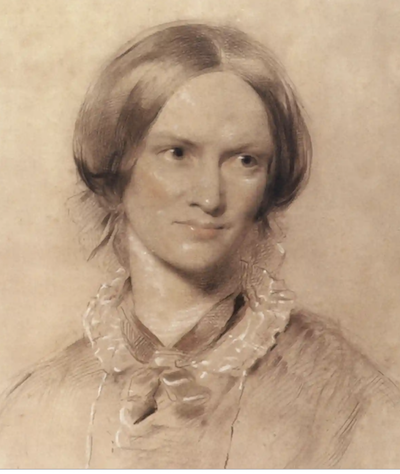
Learn more about Charlotte Brontë
. . . . . . . . . .
First, a little publishing history. Before attempting to publish novels, Charlotte, who seemed to be the front person for the trio of sisters, undertook the task of finding a home for a collaborative book of poems. They took masculine, or at least indeterminate, noms de plume.
Charlotte, Emily, and Anne were Currer, Ellis, and Acton respectively, all sharing the faux surname of Bell. In Charlotte’s own words:
“We had very early cherished the dream of one day becoming authors. This dream, never relinquished even when distance divided and absorbing tasks occupied us, now suddenly acquired strength and consistency: it took the character of a resolve. We agreed to arrange a small section of our poems, and, if possible, get them printed.
… The book was printed: it is scarcely known, was published and advertised at the sisters’ own expense and sold two copies) and all of it that merits to be known are the poems of Ellis Bell.”
“The book” referred to above was Currer, Ellis, and Acton Bell’s Poems. It did finally did find a home and was published in 1846 to absolutely no fanfare and humiliating sales of two copies. Charlotte continues (from the Biographical Notice of Ellis and Acton Bell, 1850):
“Ill-success failed to crush us: the mere effort to succeed had given a wonderful zest to existence; it must be pursued. We each set to work on a prose tale: Ellis Bell produced Wuthering Heights, Acton Bell, Agnes Grey, and Currer Bell also wrote a narrative in one volume [this refers to The Professor].
These MSS. were perseveringly obtruded upon various publishers for the space of a year and a half; usually, their fate was an ignominious and abrupt dismissal …”
Charlotte Brontë’s “forlorn” manuscript for The Professor, submitted under her pen name, Currer Bell, was making its rounds, rejected by half a dozen London publishers. Each disappointment was crushing.
Adding to the frustration was that her sisters’ novels (Emily’s Wuthering Heights and Anne’s Agnes Grey) found homes, even as hers didn’t. Yet Charlotte, instead of sitting idly by and waiting, worked on her next novel — Jane Eyre.
At last, a publisher, seeing promise in The Professor, requested the chance to see the pseudonymous author’s next book, which Charlotte had at the ready. the book was hastily brought out just six weeks after acceptance, and became an immediate bestseller. The Professor, meanwhile, continued to languish, and was published only after Charlotte’s death.
Read more about the Brontë sisters’ arduous path to publication.
. . . . . . . . .
Jane Eyre (1847)
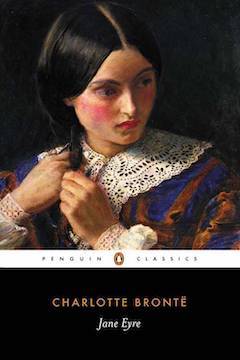
Jane Eyre, Charlotte Brontë’s best-known novel, weaves the story of the title heroine’s love for the mysterious and reclusive Mr. Rochester with her quest for independence. First published under her pseudonym, Currer Bell, the novel was an immediate success, setting off a frenzy of speculation as to the true identity of its author.
Though considered a proto-feminist work, it also fits into the gothic novel genre due to that pesky little detail of Rochester’s mad wife locked away in an attic. Through the concise plot summary of Jane Eyre that follows, the reader will get an overview of the book that made Charlotte Brontë famous.
Jane, a young woman of unassuming background and appearance, searches for love and a sense of belonging while preserving her independence. The book sparked a fair amount of controversy when first published, which was fueled by critics and the public suspecting that “Currer Bell” (the author’s ambiguous pseudonym) was a woman.
Still, the novel was an immediate success, securing for Charlotte a place in the literary world of her time and for generations to come. Explore Charlotte Brontë’s iconic novel here:
Plot summary of Jane Eyre A Late 19th-Century Analysis Virginia Woolf’s Analysis of Jane Eyre and Wuthering Heights Teaching Jane Eyre: A Professor’s Perspective Jane Eyre and I: A Love Affair for Life 39 Great Quotes from Jane Eyre Jane Eyre: The 1943 Film Based on the Novel Charlotte Brontë Before Jane Eyre. . . . . . . . .
Shirley (1849)
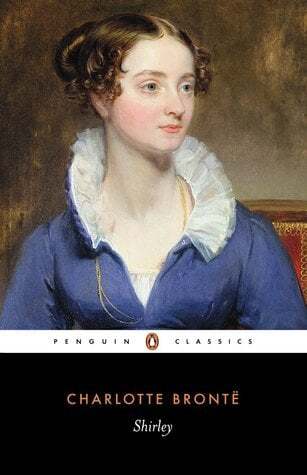
Shirley was Charlotte’s second published novel, still under the pseudonym Currer Bell, the mysterious author who had already achieved fame with Jane Eyre.
The lengthy novel has two female protagonists — the eponymous Shirley Keeldar and Caroline Helstone. Set in Charlotte’s native Yorkshire, it takes place against the background of the textile industry’s Luddite uprisings of 1811 and 1812.
Shirley: A Tale, as it was originally titled, is considered an example of the mid-19th century “social novel.” The social novels that emerged from that period were works of fiction dealing with themes like labor injustice, bias against women, and poverty.
Charlotte supposedly told Elizabeth Gaskell (who, not long after the former’s death would become her first biographer) that the character of Shirley was how she imagined her sister Emily might have turned out if she’d had the benefits of wealth and privilege.
More about Shirley …
Shirley by Charlotte Brontë: A Plot Summary Was Charlotte Brontë’s Shirley an Idealized Portrait of Her Sister Emily? Charlotte Brontë’s Shirley: The Power of Female Friendship Full text of Shirley on Project Gutenberg. . . . . . . . .
Villette (1853)
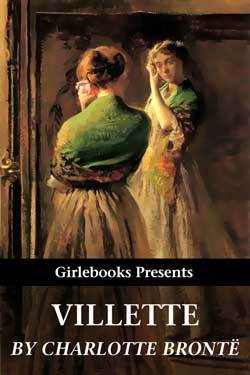
Jane Eyre notwithstanding, Villette is considered Charlotte Brontë’s true masterpiece. The analysis you’ll be linked to below is excerpted from Life and Works of the Sisters Brontë (1899) by Mary A. Ward, a 19th-century British novelist and literary critic. Ward wrote deeply and sensitively about the works of the Brontë sisters, and her direct language and insights still greatly inform the contemporary reader.
In her analysis, she also conveys the duress experienced by Charlotte, and the difficulties she had in writing Villette while grieving the deaths of her beloved sisters, Emily and Anne. Villette is the story of Lucy Snowe, of whom Mrs. Ward writes:
“Lucy Snowe is Jane Eyre again, the friendless girl, fighting the world as best she may, her only weapon a strong and chainless will, her constant hindrances, the passionate nature that makes her the slave of sympathy, of the first kind look or word, and the wild poetic imagination that forbids her all reconciliation with her own lot, the lot of the unbeautiful and obscure.
But though she is Jane Eyre over again there are differences, and all, it seems to me, to Lucy’s advantage. She is far more intelligible—truer to life and feeling. Morbid she is often; but Lucy Snows so placed, and so gifted, must have been morbid.”
More about Villette …
Villette by Charlotte Brontë: A Late 19th-Century Analysis Villette by Charlotte Brontë: A Portrait of Lucy Snowe. . . . . . . . .
The Professor (1857)
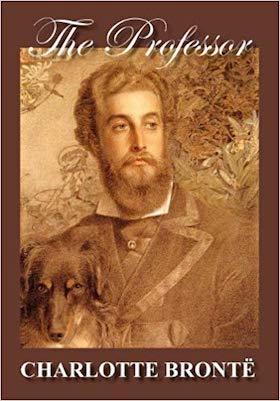
Though Jane Eyre was Charlotte Brontë‘s first published novel, The Professor was actually the first novel she completed. It wasn’t published until 1857, two years after her death, with her literary reputation secured.
The Professor was something of a roman à clef, based on Charlotte’s experiences while studying and teaching in Brussels.
The title character was based on Constantin Héger, the headmaster of the school, a married man with children with whom Charlotte had fallen in love. Usually no-nonsense and practical, if not entirely level-headed, she became obsessed with Héger and made something of a fool of herself — though that is a subject for a different post entirely.
When Charlotte returned to the theme of this work as a more mature writer, it grew into Villette, which, as mentioned earlier, is considered her true masterpiece.
Read more in The Professor by Charlotte Brontë: A Late 19th-Century Analysis.
The post Charlotte Brontë’s Novels: Jane Eyre, Shirley, Villette, & The Professor appeared first on Literary Ladies Guide.
June 3, 2023
Villette by Charlotte Brontë (1853): A Late 19th-Century Analysis
Presented here is a detailed analysis of Villette by Charlotte Brontë, the 1853 novel that, Jane Eyre notwithstanding, is considered her true masterpiece. It also conveys the duress experienced by Charlotte, and the difficulties she had in writing Villette, as she was grieving the deaths of her beloved sisters, Emily and Anne.
The following is excerpted from Life and Works of the Sisters Brontë (1899) by Mary A. Ward, (sometimes writing as Mrs. Humphrey Ward) a 19th-century British novelist and literary critic. Ward wrote deeply and sensitively about the works of the Brontë sisters, and her direct language and insights still greatly inform the contemporary reader.
Villette by Charlotte Brontë—an Introduction
During the year which followed the publication of Shirley, Charlotte Brontë seems to have been content to rest from literary labour—save for the touching and remarkable Preface that she contributed in the autumn of the year to the reprint of Wuthering Heights and Agnes Grey—which had been happily rescued from Mr. Newby and were safe in Mr. Smith’s hands.
We hear nothing of any new projects. After the great success of Shirley and Jane Eyre, indeed, she turned back to think of the still unprinted manuscript of The Professor, and to plans of how work already done might be turned to account, now that the public knew her and the way was smoothed.
Towards the end of 1850, or in the first days of 1851, she wrote a fresh preface to The Professor, and suggested to her publishers that they should at last venture upon its publication.
They did not apparently refuse; but they advised her against the project; and as Mr. Nicholls says in a note which he added to his wife’s Preface, on the publication of The Professor after her death, she then made use of the materials in a subsequent work—Villette.
There is an interesting and, for the most part, unpublished letter to Mr. George Smith, still in existence, which throws light upon this disappointment of hers—a disappointment which to us is pure gain, since it produced Villette. In spite of her gaiety of tone, it is evident that she is sensitive in the matter, and a little wounded—
“Mr. Williams will have told you [she writes to Mr. Smith] that I have yielded with ignoble facility in the matter of The Professor. Still it may be proper to make some attempt towards dignifying that act of submission by averring that it was done ‘under protest.’
The Professor has now had the honour of being rejected nine times by the ‘Trade.’ (Three rejections go to your own share; you may affirm that you accepted it this last time, but that cannot be admitted; if it were only for the sake of symmetry and effect, I must regard this martyrized MS. as repulsed or at any rate withdrawn for the ninth time!)
Few—I flatter myself—have earned an equal distinction, and of course my feelings towards it can only be paralleled by those of a doting parent towards an idiot child. Its merits—I plainly perceive—will never be owned by anybody but Mr. Williams and me; very particular and unique must be our penetration, and I think highly of us both accordingly. You may allege that merit is not visible to the naked eye. Granted; but the smaller the commodity—the more inestimable its value.
You kindly propose to take The Professor into custody. Ah—no! His modest merit shrinks at the thought of going alone and unbefriended to a spirited publisher. Perhaps with slips of him you might light an occasional cigar—or you might remember to lose him some day—and a Cornhill functionary would gather him up and consign him to the repositories of waste paper, and thus he would prematurely find his way to the ‘butterman’ and trunkmakers.
No—I have put him by and locked him up—not indeed in my desk, where I could not tolerate the monotony of his demure quaker countenance, but in a cupboard by himself.”
In the same letter, she goes on to say—the passage has been already quoted by Mrs. Gaskell—that she must accept no tempting invitations to London, till she has ‘written a book.’ She deserves no treat, having done no work.
Early in 1851 then, having locked up The Professor as finally done with and set aside, Miss Brontë fell back once more on the material of the earlier book, holding herself free to use it again in a different and a better way.
With all the quickened and enriched faculty which these five years of labour and of fame had brought her, she returned to the scenes of her Brussels experience, and drew Villette from them as she had once drawn The Professor.
By the summer she had probably written the earlier chapters, and early in June she at last allowed herself the change and amusement of a visit to Mr. George Smith and his mother, who were then living in Gloucester Place.
Real-life incidents woven into VilletteThis visit contributed much to the growing book. In the first place the character of Graham Bretton—“Dr. John”—owed many characteristic features and details to Miss Brontë’s impressions, now renewed and completed, of her kind host and publisher, Mr. George Smith.
Mrs. Smith, Mr. George Smith’s mother, was even more closely drawn—sometimes to words and phrases which are still remembered—in the Mrs. Bretton of the book.
And further, two incidents at least of this London visit may be recognised in Villette; one connected with Thackeray’s second lecture on “The English Humourists,” to which Miss Brontë was taken by her hosts—the other a night at the theatre, when she saw Rachel act for the first time.
As to the lecture, after it was over, the great man himself came down from the platform, and making his way to the small, shy lady sitting beside Mrs. Smith, eagerly asked her “how she had liked it.” How many women would have felt the charm, the honour even, of the tribute implied! But the “very austere little person,” as Thackeray afterwards described Charlotte, thus approached, was more repelled than pleased …
With regard to the acting of the great, the “possessed” Rachel, it made as deep an impression on Charlotte Brontë, as it produced much about the same time on Matthew Arnold.
“On Saturday (she writes) I went to see Rachel; a wonderful sight—terrible as if the earth had cracked deep at your feet, and revealed a glimpse of hell. I shall never forget it. She made me shudder to the marrow of my bones; in her some fiend has certainly taken up an incarnate home. She is not a woman; she is a snake; she is the—!”
And again—
“Rachel’s acting transfixed me with wonder, enchained me with interest, and thrilled me with horror … it is scarcely human nature that she shows you; it is something wilder and worse; the feelings and fury of a fiend.”
One has only to turn from these letters to the picture of the “great actress” in Villette, who holds the theatre breathless on the night when Dr. John and his mother take Lucy Snowe to the play, to see that the passage in the book, with all its marvelous though unequal power, its mingling of high poetry with extravagance and occasional falsity of note, is a mere amplification of the letters.
It shows how profoundly the fiery dæmonic element in Miss Brontë had answered to the like gift in Rachel; and it bears testimony once more to the close affinity between her genius and those more passionate and stormy influences let loose in French culture by the romantic movement. Rachel acted the classical masterpieces; but she acted them as a romantic of the generation of “Hernani”: and it was as a romantic that she laid a fiery hand on Charlotte Brontë.
. . . . . . . . . . .

See also: Villette—a Portrait of a Woman in Shadow
. . . . . . . . . . .
After the various visits and excitements of the summer Charlotte tried to make progress with the new story, during the loneliness of the autumn at Haworth. But Haworth in those days seems to have been a poisoned place. A kind of low fever—influenza—feverish cold—were the constant plagues of the parsonage and its inmates.
The poor story-teller struggled in vain against illness and melancholy. She writes to Mrs. Gaskell of “deep dejection of spirits,” and to Mr. Williams that it is no use grumbling over hindered powers or retarded work, “for no words can make a change.”
It is a matter between Currer Bell “and his position, his faculties, and his fate.” Was it during these months of physical weakness—haunted, too, by the longing for her sisters and the memory of their deaths—that she wrote the wonderful chapters describing Lucy Snowe’s delirium of fever and misery during her lonely holidays at the pensionnat?
The imagination is at least the fruit of the experience; for the poet weaves with all that comes to his hand. But there are degrees of delicacy and nobility in the weaving. Edmond de Goncourt noted, as an artist—for the public—every detail of his brother’s death, and his own sensations. Charlotte conceived the sacred things of kinship more finely.
Those veiled and agonized passages of Shirley are all that she will tell the world of woes that are not wholly her own. But of her personal suffering, physical and mental, she is mistress, and she has turned it to poignant and lasting profit in the misery of Lucy Snowe.
A misery, of which the true measure lies not in the story of Lucy’s fevered solitude in the Rue Fossette, of her wild flight through Brussels, her confession to Père Silas, her fainting in the stormy street, but rather in the profound and touching passage which describes how Lucy, rescued by the Brettons, comforted by their friendship and at rest, yet dares not let herself claim too much from that friendship, lest, like all other claims she has ever made, it should only land her in sick disappointment and rebuff at last.
“Do not let me think of them too often, too much, too fondly,” I implored: “Let me be content with a temperate draught of the living stream: let me not run athirst, and apply passionately to its welcome waters: let me not imagine in them a sweeter taste than earth’s fountains know. Oh! would to God I may be enabled to feel enough sustained by an occasional, amicable intercourse, rare, brief, unengrossing and tranquil: quite tranquil!
Still repeating this word, I turned to my pillow; and still repeating it, I steeped that pillow with tears.”
Words so desolately, bitterly true were never penned till the spirit that conceived them had itself drunk to the lees the cup of lonely pain.
But the spring of the following year brought renewing of life and faculty. Charlotte wrote diligently, refusing to visit or be visited, till again, in June, resolution and strength gave way. Her father, too, was ill; and in July she wrote despondently to Mr. Williams as to the progress of the book.
In September, though quite unfit for concentrated effort, she was stern with herself, would not let her friend, Ellen Nussey, come—vowed, cost what it might, “to finish.” In vain. She was forced to give herself the pleasure of her friend’s company “for one reviving week.” Then she resolutely sent the kind Ellen Nussey away, and resumed her writing.
Always the same pathetic “craving for support and companionship,” as she herself described it!—and always the same steadfast will, forcing both the soul to patience, and the body to its work. No dear comrades now beside her!—with whom to share the ardors or the glooms of composition.
She writes once to Mr. Williams of her depression “and almost despair, because there is no one to read a line, or of whom to ask a counsel. Jane Eyre was not written under such circumstances, nor were two-thirds of Shirley.”
During her worst time of weakness, as she confessed to Mrs. Gaskell, “I sat in my chair day after day, the saddest memories my only company. It was a time I shall never forget. But God sent it, and it must have been for the best.”—Language that might have come from one of the pious old maids of Shirley.
How strangely its gentle Puritan note mates with the exuberant, audacious power the speaker was at that moment throwing into Villette! But both are equally characteristic, equally true. And it is perhaps in the union of this self-governing English piety, submissive, practical, a little stern, with her astonishing range and daring as an artist, that one of Charlotte Brontë’s chief spells over the English mind may be said to lie.
One more patient effort, however, in this autumn of 1852, and the book at last was done. She sent the later portion of it, trembling, to her publishers.
Mr. Smith had already given her warm praise for the first half of the story; and though both he and Mr. Williams made some natural and inevitable criticisms when the whole was in their hands, yet she had good reason to feel that substantially Cornhill was satisfied, and she herself could rest, and take pleasure—and for the writer there is none greater—in the thing done, the task fulfilled. In January 1853 she was in London correcting proofs, and on the 24th of that month the book appeared.
Villette received with “one burst of acclamation”
“Villette,” says Mrs. Gaskell, “was received with one burst of acclamation.” There was no question then among “the judicious,” and there can be still less question now, that it is the writer’s masterpiece. It has never been so widely read as Jane Eyre; and probably the majority of English readers prefer Shirley.
The narrowness of the stage on which the action passes, the foreign setting, the very fullness of poetry, of visualising force, that runs through it, like a fiery stream bathing and kindling all it touches down to the smallest detail, are repellent or tiring to the mind that has no energy of its own responsive to the energy of the writer.
But not seldom the qualities which give a book immortality are the qualities that for a time guard it from the crowd—till its bloom of fame has grown to a safe maturity, beyond injury or doubt.
“I think it much quieter than Shirley,” said Charlotte, writing to Mrs. Gaskell just before the book’s appearance. “It will not be considered pretentious,” she says, in the letter that announces the completion of the manuscript. Strange!—as though it were her chief hope that the public would receive it as the more modest offering of a tamed muse.
Did she really understand so little of what she had done? For of all criticisms that can be applied to it, none has so little relation to Villette as a criticism that goes by negatives. It is the most assertive, the most challenging of books.
From beginning to end it seems to be written in flame; one can only return to the metaphor, for there is no other that renders the main, the predominant impression. The story is, as it were, upborne by something lambent and rushing.
Masterfully written detail and characterizations
Whether it be the childhood of Paulina, or the first arrival of the desolate Lucy in Villette, or those anguished weeks of fever and nightmare which culminated in the confession to the Père Silas, or the yearning for Dr. John’s letters, or the growth, so natural, so true, of the love between Lucy and Paul Emanuel on the very ruins and ashes of Lucy’s first passion, or the inimitable scene, where Lucy, led by the “spirit in her feet,” spirit of longing, spirit of passion, flits ghost-like through the festival-city, or the last pages of dear domestic sweetness, under the shadow of parting—there is nothing in the book but shares in this all-pervading quality of swiftness, fusion, vital warmth.
And the detail is as a rule much more assured and masterly than in the two earlier books. Here and there are still a few absurdities that recall the drawing-room scenes of Jane Eyre—a few unfortunate or irrelevant digressions like the chapter Cleopatra—little failures in eye and tact that scores of inferior writers could have avoided without an effort.
But they are very few; they spoil no pleasure. And as a rule the book has not only imagination and romance, it has knowledge of life, and accuracy of social vision, in addition to all the native shrewdness, the incisive force of the early chapters of Jane Eyre.
Overview of the chief characters
Of all the characters, Dr. John no doubt is the least tangible, the least alive. Here the writer was drawing enough from reality to spoil the freedom of imagination that worked so happily in the creation of Paulina, and not enough to give to her work that astonishing and complex truth which marks the portrait of Paul Emanuel.
Dr. John occasionally reminds us of the Moores; and it is not just that he should do so; there is inconsistency and contradiction in the portrait—not much, perhaps, but enough to deprive it of the ‘passionate perfection,’ the vivid rightness that belong to all the rest.
Yet the whole picture of his second love—the subduing of the strong successful man to modesty and tremor by the sudden rise of true passion, by the gentle, all-conquering approach of the innocent and delicate Paulina—is most subtly felt, and rendered with the strokes, light and sweet and laughing, that belong to the subject.
As to Paul Emanuel, we need not repeat all that Mr. Swinburne has said; but we need not try to question, either, his place among the immortals:
“Magnificent-minded, grand-hearted, dear faulty little man!” It may be true as Mr. Leslie Stephen contends, that—in spite of his relation to the veritable M. Héger—there are in him elements of femininity, that he is not all male. But he is none the less man and living, for that; the same may be said of many of his real brethren.
And what variety, what invention, what truth, have been lavished upon him! and what a triumph to have evolved from such materials,—a schoolroom, a garden, a professor, a few lessons, conversations, walks,—so rich and sparkling a whole!
Madame Beck and Ginevra Fanshawe are in their way equally admirable. They are conceived in the tone of satire; they represent the same sharp and mordant instinct that found so much play in Shirley. But the mingled finesse and power with which they are developed is far superior to anything in Shirley; the curates are rude, rough work beside them.
Lucy SnoweAnd Lucy Snowe? Well—Lucy Snowe is Jane Eyre again, the friendless girl, fighting the world as best she may, her only weapon a strong and chainless will, her constant hindrances, the passionate nature that makes her the slave of sympathy, of the first kind look or word, and the wild poetic imagination that forbids her all reconciliation with her own lot, the lot of the unbeautiful and obscure.
But though she is Jane Eyre over again there are differences, and all, it seems to me, to Lucy’s advantage. She is far more intelligible—truer to life and feeling. Morbid she is often; but Lucy Snows so placed, and so gifted, must have been morbid.
There are some touches that displease, indeed, because it is impossible to believe in them. Lucy Snowe could never have broken down, never have appealed for mercy, never have cried “My heart will break!” before her treacherous rival, Madame Beck, in Paul Emanuel’s presence.
A reader, by virtue of the very force of the effect produced upon him by the whole creation, has a right to protest “incredible!”
No woman, least of all Lucy Snowe, could have so understood her own cause, could have so fought her own battle. But in the main nothing can be more true or masterly than the whole study of Lucy’s hungering nature, with its alternate discords and harmonies, its bitter-sweetness, its infinite possibilities for good and evil, dependent simply on whether the heart is left starved or satisfied, whether love is given or withheld.
She enters the book pale and small and self-repressed, trained in a hard school, to stern and humble ways, like Jane Eyre—like Charlotte Brontë herself. But Charlotte has given to her more of her own rich inner life, more of her own poetry and fiery distinction, than to Jane Eyre.
She is weak, but except perhaps in that one failure before Madame Beck, she is always touching, human, never to be despised. She is in love with loving when she first appears; and she loves Dr. John because he is kind and strong, and the only man she has yet seen familiarly.
What can be more natural?—or more exquisitely observed than the inevitable shipwreck of this first romance, and the inevitable anguish, so little known or understood by any one about her, that it brings with it? It passes away, like a warm day in winter, not the true spring, only its herald.
And then slowly, almost unconsciously, there grows up the real affinity, the love “venturing diffidently into life after long acquaintance, furnace-tried by pain, stamped by constancy.” The whole experience is life itself, as a woman’s heart can feel and make it.
Harriet Martineau’s criticism
Harriet Martineau’s criticism of Villette—and it is one which hurt the writer sorely—shows a singular, yet not surprising blindness. Even more sharply than in her Daily News review, she expresses it in a private letter to Miss Brontë:—
“I do not like the love,”—she says—“either the kind or the degree of it,” —and she maintains that “its prevalence in the book, and effect on the action of it,” go some way to explain and even to justify the charge of ‘coarseness’ which had been brought against the writer’s treatment of love in Jane Eyre.
The remark is curious, as pointing to the gulf between Miss Martineau’s type of culture—which alike in its strength and its weakness is that of English provincial Puritanism—and that more European and cosmopolitan type, to which, for all her strong English and Yorkshire qualities, and for all her inferiority to her critic in positive knowledge, Charlotte Brontë, as an artist, really belonged.
The truth is, of course, that it is precisely in and through her treatment of passion—mainly, no doubt, as it affects the woman’s heart and life—that she has earned and still maintains her fame. And that brings us to the larger question with which Charlotte Brontë’s triumph as an artist is very closely connected.
What may be said to be the main secret, the central cause not only of her success, but, generally, of the success of women in fiction, during the present century? In other fields of art they are still either relatively amateurs, or their performance, however good, awakens a kindly surprise. Their position is hardly assured; they are still on sufferance.
Whereas in fiction the great names of the past, within their own sphere, are the equals of all the world, accepted, discussed, analyzed, by the masculine critic, with precisely the same keenness and under the same canons as he applies to Thackeray or Stevenson, to Balzac or Loti.
The reason perhaps lies first in the fact that, whereas in all other arts they are comparatively novices and strangers, having still to find out the best way in which to appropriate traditions and methods not created by women, in the art of speech, elegant, fitting, familiar speech, women are and have long been at home.
They have practiced it for generations, they have contributed largely to its development. The arts of society and of letter-writing pass naturally into the art of the novel.
Literary predecessors and contemporaries
Madame de Sévigné and Madame du Deffand are the precursors of George Sand; they lay her foundations, and make her work possible. In the case of poetry, one might imagine, a similar process is going on, but it is not so far advanced. In proportion, however, as women’s life and culture widen, as the points of contact between them and the manifold world multiply and develop, will Parnassus open before them.
At present those delicate and noble women who have entered there look a little strange to us. Mrs. Browning, George Eliot, Emily Brontë, Marcelline Desbordes-Valmore—it is as though they had wrested something that did not belong to them, by a kind of splendid violence.
As a rule, so far, women have been poets in and through the novel-Cowper-like poets of the common life like Miss Austen, or Mrs. Gaskell, or Mrs. Oliphant; Lucretian or Virgilian observers of the many-colored web like George Eliot, or, in some phases, George Sand; romantic or lyrical artists like George Sand again, or like Charlotte and Emily Brontë. Here no one questions their citizenship; no one is astonished by the place they hold; they are here among the recognized “masters of those who know.”
Why? For, after all, women’s range of material, even in the novel, is necessarily limited. There are a hundred subjects and experiences from which their mere sex debars them. Which is all very true, but not to the point.
Love, as a woman understands itFor the one subject which they have eternally at command, which is interesting to all the world, and whereof large tracts are naturally and wholly their own, is the subject of love—love of many kinds indeed, but pre-eminently the love between man and woman. And being already free of the art and tradition of words, their position in the novel is a strong one, and their future probably very great.
But it is love as the woman understands it. And here again is their second strength. Their peculiar vision, their omissions quite as much as their assertions, make them welcome. Balzac, Flaubert, Anatole France, Paul Bourget, dissect a complex reality, half physical, half moral; they are students, psychologists, men of science first, poets afterwards.
They veil their eyes before no contributory fact, they carry scientific curiosity and veracity to the work; they must see all and they must tell all. A kind of honor seems to be involved in it—at least for the Frenchman, as also for the modern Italian and Spaniard.
On the other hand, English novels by men—with the great exceptions of Richardson in the last century, and George Meredith in this, from Fielding and Scott onwards, are not, as a rule, studies of love. They are rather studies of manners, politics, adventure.
Is it the development of the Hebraist and Puritan element in the English mind—so real, for all its attendant hypocrisies—that has debarred the modern Englishman from the foreign treatment of love, so that, with his realistic masculine instinct, he has largely turned to other things? But, after all, love still rules “the camp, the court, the grove!”
There is as much innocent, unhappy, guilty, entrancing love in the world as there ever was. And treated as the poets treat it, as George Meredith has treated it in Richard Feverel, or in Emilia in England, or with that fine and subtle romance which Henry James threw into Roderick Hudson, it can still, even in its most tragic forms, give us joy—as no Flaubert, no Zola, will ever give us joy.
The modern mind craves for knowledge, and the modern novel reflects the craving—which after all it can never satisfy. But the craving for feeling is at least as strong, and above all for that feeling which expresses the heart’s defiance of the facts which crush it, which dives, as Renan says, into the innermost recesses of man, and brings up, or seems to bring up, the secrets of the infinite.
Tenderness, faith, treason, loneliness, parting, yearning, the fusion of heart with heart and soul with soul, the ineffable illumination that love can give to common things and humble lives,—these, after all, are the perennially interesting things in life; and here the women-novelists are at no disadvantage.
Their knowledge is of the centre; it is adequate, and it is their own. Broadly speaking, they have thrown themselves on feeling, on Poetry. And by so doing they have won the welcome of all the world, men and women, realists and idealists alike. For She—“warm Recluse”—has her hiding-place deep in the common heart, where “fresh and green—she lives of us unseen;” and whoever can evoke her, has never yet lost his reward.
It is as poets then, in the larger sense, and as poets of passion, properly so-called—that is, of exalted and transfiguring feeling—that writers like George Meredith, and George Sand, and Charlotte Brontë affect the world, and live in its memory. Never was Charlotte Brontë better served by this great gift of poetic vision than in Villette—never indeed so well. The style of the book throughout has felt the kindling and transforming influence.
There are few or no cold lapses, no raw fillings in. What was extravagance and effort in Shirley has become here a true “grand style,” an exaltation, a poetic ambition which justifies itself. One illustration is enough.
The famous scene of the midnight fêteLet us take it from the famous scene of the midnight fête, when Lucy, racked with jealousy and longing, escapes from the pensionnat by night, hungering for the silence and the fountains of the park, and wanders into the festal streets, knowing nothing of what is happening there.
“Hush! the clock strikes. Ghostly deep as is the stillness of this house, it is only eleven. While my ear follows to silence the hum of the last stroke, I catch faintly from the built-out capital, a sound like bells, or like a band—a sound where sweetness, where victory, where mourning blend. Oh, to approach this music nearer, to listen to it alone by the rushy basin! Let me go—oh, let me go! What hinders, what does not aid freedom?
Quiet Rue Fossette! I find on this pavement that wanderer-wooing summer night of which I mused; I see its moon over me; I feel its dew in the air. But here I cannot stay; I am still too near old haunts: so close under the dungeon, I can hear the prisoners moan. This solemn peace is not what I seek, it is not what I can bear: to me the face of that sky bears the aspect of a world’s death. The park also will be calm—I know, a mortal serenity prevails everywhere—yet let me seek the park.
Villette is one blaze, one broad illumination; the whole world seems abroad; moonlight and heaven are banished: the town, by her own flambeaux, beholds her own splendor—gay dresses, grand equipages, fine horses and gallant riders throng the bright streets. I see even scores of masks. It is a strange scene, stranger than dreams.
That festal night would have been safe for a very child. Half the peasantry had come in from the outlying environs of Villette, and the decent burghers were all abroad and around, dressed in their best. My straw hat passed amidst cap and jacket, short petticoat, and long calico mantle, without, perhaps, attracting a glance; I only took the precaution to bind down the broad leaf gipsy-wise, with a supplementary ribbon—and then I felt safe as if masked.
Safe I passed down the avenues—safe I mixed with the crowd where it was deepest. To be still was not in my power, nor quietly to observe. I drank the elastic night air—the swell of sound, the dubious light, now flashing, now fading.”
Then follow the two or three little scenes, so brilliant, and yet so flickering and dream-like, of which Lucy—closely concerned in them all—is the ghostly and unseen spectator; the sight of the Brettons in their carriage; the pursuit of the music swelling through the park, like “a sea breaking into song with all its waves”; the Bretton group beside the band; the figures and the talk that surround Madame Beck, and then, climax of the whole, the entry of M. Paul, under the eyes of Lucy—Lucy who watches him from a few yards distance—secret, ardent, unknown.
The story grows fast with every page—magical and romantic, as the park itself with its lights and masks and song; one seems to be watching the incidents in a sparkling play, set in a passionate music; yet all, as it were, through a shining mist, wavering and phantasmal.
But at last it is over, and Lucy, the specter, the spy, must go home with the rest.
“I turned from the group of trees and the ‘merrie companie’ in its shade. Midnight was long past; the concert was over, the crowds were thinning. I followed the ebb. Leaving the radiant park and well-lit Haute-Ville … I sought the dim lower quarter.
Dim I should not say, for the beauty of moonlight—forgotten in the park—here once more flowed in upon perception. High she rode, and calm and stainlessly she shone. The music and the mirth of the fête, the fire and bright hues of those lamps had outdone and outshone her for an hour, but now, again, her glory and her silence triumphed.
The rival lamps were dying: she held her course like a white fate. Drum, trumpet, bugle, had uttered their clangour, and were forgotten; with pencil-ray she wrote on heaven and on earth records for archives everlasting.”
This surely is romance, is poetry. It is not what has been called the lactea ubertas of George Sand. It does not flow so much as flash. It is more animated than Jeanne; more human and plastic than Lélia. Consuelo comes nearest to it; but even the latter is cold beside it.
And then, turn from such a rush of passionate feeling and description to the scenes of character and incident, to the play of satiric invention in the portraits of Madame Beck, the Belgian schoolgirls, Ginevra Fanshawe, M. Paul. What a vivid, homely, poignant truth in it all!—like the sharp and pleasant scent of bruised herbs.
The writer’s fresh inventive senseNo novel, moreover, that escapes obscurity and ugliness was ever freer from stereotyped forms and phrases. The writer’s fresh inventive sense is perpetually brushing them away as with a kind of impatience. The phrases come out new minted, shining; each a venture, and, as a rule, a happy one; yet with no effect of labour or research; rather of a careless freedom and wealth.
Once again we may notice the influence of French books, of the French romantic tradition, which had evidently flowed in full tide through the teaching of that Brussels class-room, whence literally Villette took its being.
Villette itself, in portions that are clearly autobiographical, bears curious testimony to the French reading, which stirred and liberated Charlotte’s genius, as Hofmann’s tales gave spur and impetus to Emily. It was a fortunate chance that thus brought to bear upon her at a critical moment a force so strong and kindred, a force starting from a Celt like herself, from the Breton Chateaubriand.
She owes to it much of her distinction, her European note. French men of letters have always instinctively admired and understood her. They divine that there are certain things in the books of their Romantics that she might very well have written—the description, for instance, of Chateaubriand’s youth, of his strange sister, of his father and mother, and the old Château of Combourg, in the Mémoires d’Outre Tombe.
Those pages have precisely her mixture of broad imagination with sharpness of detail; they breathe her yearning and her restlessness. And no doubt, like Atala and René, they have a final mellowness and mastery, to which the English writer hardly attained.
But to what might she not have attained had she lived, had she gone on working? Alas! the delicate heart and life had been too deeply wounded; and in the quiet marriage which followed immediately on Villette the effort to be simply, personally happy proved too much for one who had known so well how to suffer.
The sickness and loneliness through which Villette was written had no power, apparently, to harm the book. Above the encroachments of personal weakness she was able for a time to carry her gift, like a torch above a swelling stream, unhurt.
In the writing of Shirley it was the spectacle of her sisters’ anguish that had distracted and unnerved her. Above her own physical and moral pain, the triumph of Villette is complete and extraordinary. But it is clear that she felt a deep exhaustion afterwards.
The fragment of Emma, indeed, seems to show that she might at some later time have resumed the old task. But for the moment there was clear disinclination for an effort of which she had too sharply measured the cost.
. . . . . . . . . . .

Jane Eyre — a late 19th-century analysis
. . . . . . . . . . .
In another unpublished letter to Mr. Smith, written in 1854, two months before her own marriage, and shortly after Mr. Smith’s, she says—
April 25, 1854.
To George Smith, Esq.
My dear Sir—Thank you for your congratulations and good wishes; if these last are realised but in part—I shall be very thankful. It gave me also sincere pleasure to be assured of your own happiness, though of that I never doubted.
I have faith also in its permanent character, provided Mrs. George Smith is, what it pleases me to fancy her to be. You never told me any particulars about her—though I should have liked them much—but did not like to ask questions, knowing how much your mind and time would be engaged. What I have to say is soon told.
The step in contemplation is no hasty one; on the gentleman’s side at least, it has been meditated for many years, and I hope that in at last acceding to it, I am acting right; it is what I earnestly wish to do. My future husband is a clergyman. He was for eight years my father’s curate. He left because the idea of this marriage was not entertained as he wished.
His departure was regarded by the parish as a calamity, for he had devoted himself to his duties with no ordinary diligence. Various circumstances have led my father to consent to his return, nor can I deny that my own feelings have been much impressed and changed by the nature and strength of the qualities brought out in the course of his long attachment.
I fear I must accuse myself of having formerly done him less than justice. However, he is to come back now. He has foregone many chances of preferment to return to the obscure village of Haworth. I believe I do right in marrying him. I mean to try to make him a good wife. There has been heavy anxiety, but I begin to hope all will end for the best.
My expectations, however, are very subdued—very different, I dare say, to what yours were before you were married. Care and Fear stand so close to Hope, I sometimes scarcely can see her for the shadow they cast. And yet I am thankful too, and the doubtful future must be left with Providence.
On one feature in the marriage I can dwell with unmingled satisfaction, with a certainty of being right. It takes nothing from the attention I owe to my Father; I am not to leave him—my future husband consents to come here—thus Papa secures by the step a devoted and reliable assistant in his old age. There can, of course, be no reason for withholding the intelligence from your Mother and sisters; remember me kindly to them whenever you write.
I hardly know in what form of greeting to include your wife’s name, as I have never seen her—say to her whatever may seem to you most appropriate and most expressive of good will. I sometimes wonder how Mr. Williams is, and hope he is well. In the course of the year that is gone Cornhill and London have receded a long way from me; the links of communication have waxed very frail and few. It must be so in this world. All things considered, I don’t wish it otherwise.
Yours sincerely,
C. Brontë.
Like her sisters, taken from life in its prime
Sad and gentle words!—written under a grey sky. They imply a quiet, perhaps a final renunciation, above all a deep need of rest. And little more than a year from the date of that letter she had passed through marriage, through the first hope of motherhood—through death.
Alas!—To stand in the bare room where she died, looking out on the church where she and her sister lie, is to be flooded at once with passionate regrets, and with a tender and inextinguishable reverence. She, too, like Emily, was “taken from life in its prime. She died in a time of promise.”
But how much had the steady eager will wrung already from the fragile body! And she has her reward. For she is of those who are not forgotten, “exceeded by the height of happier men”; whose griefs, rather, by the alchemy of poetry, have become the joys of those who follow after; whose quick delights and clear perceptions are not lost in the general store, but remain visibly marked and preserved to us, in forms that have the time-resisting power, through long years, to reawaken similar delights and perceptions in minds attune and sensitive.
This it is to live as an artist; and of no less than this is Charlotte Brontë now assured.
More about Villette by Charlotte Brontë Wikipedia Reader discussion on Goodreads Why Villette is Better than Jane Eyre Villette on Project Gutenberg Listen to Villette on LibrivoxThe post Villette by Charlotte Brontë (1853): A Late 19th-Century Analysis appeared first on Literary Ladies Guide.
June 1, 2023
Q & A with Logan Steiner, Author of After Anne
Logan Steiner’s debut novel, After Anne (May 2023) brings the untold story of Lucy Maud Montgomery (1874 – 1942) to life. It’s a vivid portrait of the Canadian author best known for Anne of Green Gables (1908) and its sequels.
After Anne is a fascinating look at Maud’s spirited personality, her hopes, and her dreams of being recognized for her writing. Yet it doesn’t shy from an honest portrayal of her sorrows and disappointments.
I learned fair amount about Maud Montgomery (perhaps better known by her author name, L.M. Montgomery) while preparing my own work, Literary Ladies Guide to the Writing Life. And so I was able to fully appreciate and truly enjoy how evocatively (and touchingly) Logan Steiner brought her to life in the pages of a novel.
lt’s a fine balancing act to fictionalize a real person while also not allowing the research to jump out at the reader, something Logan accomplished skillfully. It was also interesting to read about her process in the Author’s Note in the back of the book.
I had the pleasure of doing a Q & A with Logan to get an even deeper look at the process of bringing an iconic author to life. Before we get to it, here’s a quick description from the publisher, William Morrow (an imprint of HarperCollins):
A brief synopsis of After AnneAs a young woman, Maud Montgomery had dreams bigger than the whole of Prince Edward Island. Her exuberant spirit had always drawn frowns from her grandmother and their neighbors, but she knew she was meant to create, to capture and share the way she saw the world.
And the young girl in Maud’s mind became more and more persistent: Here is my story, she said. Here is how my name should be spelled—Anne with an “e.”
But the day Maud writes the first lines of Anne of Green Gables, she gets a visit from the handsome new minister in town, and soon faces a decision: forge her own path as a spinster authoress, or live as a rural minister’s wife, an existence she once likened to “a respectable form of slavery.” The choice she makes alters the course of her life.
With a husband whose religious mania threatens their health and happiness at every turn, the secret darkness that Maud herself holds inside threatens to break through the persona she shows to the world, driving an ever- widening wedge between her public face and private self, and putting her on a path towards a heartbreaking end.
Beautiful and moving, After Anne reveals Maud’s hidden personal challenges while celebrating what was timeless about her life and art—the importance of tenacity and the peaceful refuge found in imagination.
. . . . . . . . .
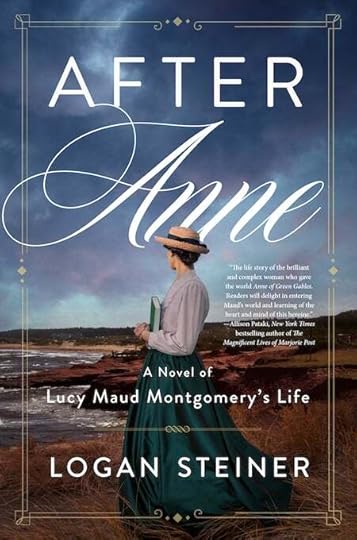
After Anne: A novel of Lucy Maud Montgomery’s Life
by Logan Steiner is available on Bookshop.org*, Amazon*,
and wherever books are sold
. . . . . . . . .
Maud had a complicate relationship with Anne (of Green Gables), her most enduing literary character. On one hand, she was grateful for the reputation and money the books brought her, and on the other, she resented what she perceived as an obligation to produce sequels in the series. Can you talk about this dichotomy in Maud’s writing life, and her own view of it, in the context of After Anne?
Maud dreaded writing characters, including Anne, when they reached middle life; she preferred youth and old age. In August 1920, after completing the last chapter of Rilla of Ingleside, Maud wrote, “I am done with Anne forever—I swear it as a dark and deadly vow.”
I have spoken to other writers who relate to Maud’s bind when it comes to sequels. On the one hand, demand for sequels shows tremendous reader interest and love for a writer and her characters.
On the other hand, that demand (and, more generally, writing to sell rather than writing based on inspiration) can take away some of the creative joy, which certainly seems to have been the case for Maud. And yet, I don’t think Maud ever wholly lost her gratitude for and connection to her most enduring character.
One thread that weaves throughout your book is Maud’s journal-keeping. Copying over her journals seemed to give her a sense of comfort and allowed her to shape the narrative of her life even as it’s falling apart. What was your experience of reading her journals, and what did you come to believe about what she left in and what she destroyed?
Reading—and rereading—Maud’s journals, I never once lost interest. The journals are compelling reads, written with Maud’s signature linguistic gifts and a narrative arc that keeps the reader engaged through many volumes.
My fascination with what Maud would have chosen to omit from her published journals was the central question of After Anne. I was fascinated not only by this question for Maud, but more generally: Which parts my life story would I choose to leave out at the end of my life? Which parts would I include?
There are no easy answers to these questions, and we will never know exactly what Maud chose to discard. But, knowing how deliberate and how self-critical she could be, I believe she probably edited out painful parts of her life—specifically, the pain about which she felt the least resolved.
And I also believe that our pain shapes us. As Elisabeth Kubler-Ross wrote, “Beautiful people do not just happen.”
Maud seemed to have mixed feelings about Ewan MacDonald from the beginning. Do you think she used her obligation to care for her grandmother as an excuse to postpone making a complete commitment to him? Was she ever fully in love with him?
I do think that Maud used her obligation to care from her grandmother as an excuse in this way—how consciously she did so is less clear.
I’m not sure Maud was ever fully in love with Ewan, although she wanted to believe that she was before they married.
. . . . . . . . .
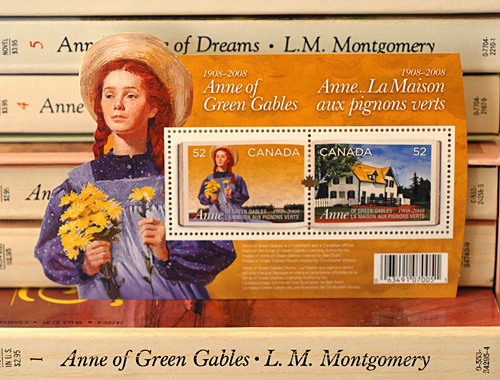
. . . . . . . . .
A passage that stood out to me: “Equally plain now in Maud’s mind was the fact that Ewan would never understand writing as her priority. Not only would he not understand, she realized with a sinking feeling — he would never accept it.”
It was all too rare back then to be both a wife and mother as well a successful author. On the rare occasions when it happened, as it did with Maud (and I’m also thinking about Harriet Beecher Stowe), it seems like the husband was pretty useless with the house, children, and finances. Can you talk about this in the context of After Anne?
It was a rare thing. In very few marriages 100 years ago did the wife out-earn the husband. To this day, members of heterosexual couples where the wife makes more money overstate the husband’s income and understate the wife’s—showing the stubborn persistence of the tired social trope of husbands as breadwinners.
Maud not only out-earned Ewan by a wide margin, but became a beloved public figure in Canada and throughout the world. This likely would have been difficult for most men to swallow in Maud’s day, but especially a man like Ewan, who came into Maud’s life already insecure about his heritage from a lower-class Scottish clan.
Not only that, but Maud must have seemed to him to have endless energy and capacity—managing with apparent ease her own writing career, the finances, the children, the household, and church and social obligations.
Ewan almost certainly felt that he had been ousted from the traditional roles society had set for him—as provider and financial manager—which fed into his sense of shame and led to his further withdrawal from these traditional roles.
Brené Brown, who has extensively researched shame, has written that “shame corrodes the very part of us that believes we are capable of change.” And secrecy feeds shame. This was true for Ewan, and it became true for Maud as she struggled with what to hide and what to reveal about Ewan and their marriage.
In the book, I wrote and rewrote the scenes between Maud and Ewan, hoping to allow readers to empathize with Ewan while also feeling Maud’s frustration—and at a deeper level, as in the quote you pull out, her sadness that Ewan would never understand the expanse of her dreams and talents.
Ewan’s struggles with mental illness plays a fairly large role in the novel, as they did in Maud’s real life. Can you discuss the impact this had on Maud’s work as well as on her own decline?
The mental health struggles of the people we live with can’t help but affect us. And Maud didn’t have the resources we do now to understand Ewan’s depression.
Maud herself had suffered from bouts of “melancholia” in the winter from a young age, and Ewan’s depression almost certainly affected her mental health—as did the addictive barbiturates and bromides he was prescribed that Maud also started to take.
I don’t think this had an obvious effect on Maud’s work—she was deeply resilient. But she did feel pressure to write successful sequels as Ewan became increasingly unable to provide for the family.
. . . . . . . . .
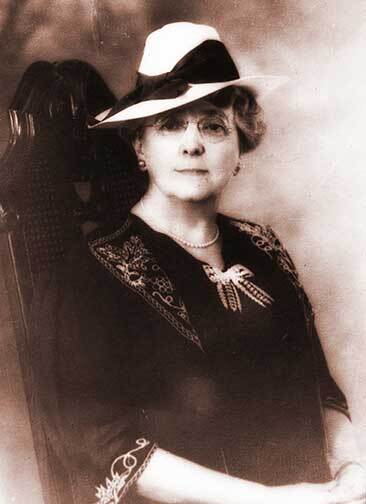
Lucy Maud Montgomery in her later years
. . . . . . . . .
Toward the end of the novel, Maud seems aware of her declining reputation, somehow feeling that her books (and in effect she herself) have gone out of fashion. Was this true in her real life?
Yes, both Maud’s upset over being classed as a writer for young people and the idea that “sentimentalism” had fallen out of fashion were true in her real life.
I wonder if, as you were shaping the novel, there were scenes you needed to leave on the cutting room floor, so to speak. That is, episodes that were fascinating but disrupted the narrative arc. And if so, can you share one or two in a nutshell?
A few that stand out were flashbacks to two of Maud’s early loves—Will Pritchard and Herman Leard. Both impacted Maud deeply, and she returned to memories of Herman Leard in particular throughout her life.
But I got feedback from early readers that there were too many peripheral characters in the novel. Both men featured in Maud’s life before the part of her story in which I was most interested—what came after Anne and its tremendous, instant success.
Readers of your novel might enjoy reading or re-reading the Anne of Green Gables series as well as the Emily of New Moon series, which is also wonderful. What are a couple of things you’d like readers of After Anne to take away from it as a way to enrich their reading of Maud Montgomery’s fiction?
One of my deepest hopes is that After Anne draws readers to, or back to, Lucy Maud Montgomery’s work. Learning about the shadows in Maud’s life—as well as the light—has added a depth to my experience of her books.
I appreciate Maud’s writing even more after learning about her tenacity and persistence, continuing to write and journal through exceedingly difficult times. I hope Maud’s story helps readers see how finding a mode of creative expression is one of the best ways to find light in the darkness.
. . . . . . . . .
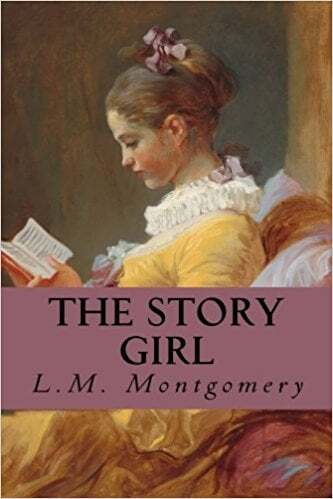
. . . . . . . . .
Do you have a personal favorite among L.M. Montgomery’s novels?
The original Anne of Green Gables. And The Story Girl, which was also a favorite of Maud’s.
Do you want to say anything about your research trip to Prince Edward Island?
It was a trip I’d dreamed of since reading the books and watching (countless times) the Megan Follows CBC series set in PEI.
More than anything, I remember the natural settings that Maud loved so well—the woods thick with mosquitos in the height of summer and still impossible not to explore; the cold shock of the water on the Cavendish shore and the gentle way it pooled against the sandstone. That trip filled me with a sense of place.
How can Literary Ladies Guide readers find out more about you (social media, website, speaking schedule, etc.)?
All information about upcoming events is on my website, LoganSteiner.com. I have upcoming events in Denver, Chicago, the Bay Area, Boston, and Prince Edward Island, and I’d love to see readers there!
I also write a Substack newsletter called The Creative Sort, which explores the internal sort we go through when deciding whether and what to create—from becoming a parent, to writing a book, to a big work project.
In addition, you can find me here:
Newsletter: Instagram Facebook Twitter LinkedInLogan Steiner is a litigator and brief-writing specialist at a boutique law firm. She graduated summa cum laude from Pomona College and cum laude from Harvard Law School. She lives in Denver with her husband and daughter. After Anne is her first novel.
*These are Bookshop Affiliate and Amazon Affiliate links. If a product is purchased by linking through, Literary Ladies Guide receives a modest commission, which helps us continue to grow.
The post Q & A with Logan Steiner, Author of After Anne appeared first on Literary Ladies Guide.
May 29, 2023
Anne of the Island by L.M. Montgomery (1915)
Anne of the Island by L.M. Montgomery is the third installment of the beloved series that follows Anne Shirley from her orphaned childhood through her years as college student, teacher, wife, and mother.
Anne of Green Gables, the first of this series by the beloved Canadian author, was published in 1908, was quickly followed by Anne of Avonlea in 1909.
Readers must have been eagerly awaiting more of Anne’s adventures, as, with a gap of six years, Anne of the Island didn’t appear until 1915 (though she did play a small role in Chronicles of Avonlea, 1912).
In Anne of the Island, our heroine sets off from Prince Edward Island to embark on her studies at Redmond College in Kingsport, Nova Scotia. At the start of the story, she is eighteen years old.
In this story, we encounter familiar characters from the first two novels in the series — Marilla Cuthbert, Anne’s adoptive mother of sorts, Gilbert Blythe, her on and off love interest, Diana Berry, her best friend, Dora and Davy Keith, the young twins also taken in by Marilla, Rachel Lynde, the town busybody with a good heart, and others.
We also meet new friends and college classmates, all of whom add to the charm of the cast of characters. As Anne comes into her early adult years, she faces some of its joys and sorrows — love’s delights and complications, rejected writings, and the death of her childhood friend, Ruby. Through it all, Anne displays the same spirit, fortitude, and humor readers have come to expect of her.
Though this book is currently considered at a Middle Grade reading level, it appeals to readers of all ages, especially devoted fans of Anne, who return to these stories year after year. Here’s an excellent plot summary and character listing.
. . . . . . . . . .
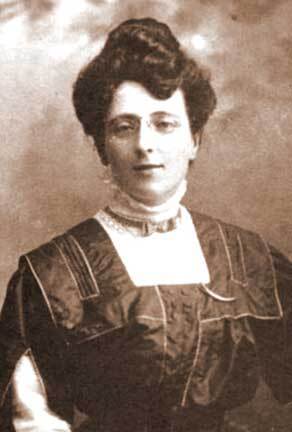
Learn more about L.M. Montgomery
. . . . . . . . .
From the original review in the Boston Evening Transcript (Boston, Massachusetts) Aug 7, 1915: After wandering around among chronicles, story girls, and other more or less entertaining adventures, Anne Shirley comes back, the same old Anne, beautiful, brilliant, charming, the good angel of Prince Edward Island.
Now she oscillates between Avonlea, where so have met her, and Redmond, where she acquires a B.A. Few stories of a girl’s have been better told than this. College life and romance are told in enticing portions. And there is an occasional holiday at Green Gables where we hear more stories by the garrulous natives, told in the quaint manner that has been a striking feature of the series of Anne books.
Aunt Atossa. a new character in Avonlea, figures in several of these. One relates her adventures at a prayer meeting. After the customary remarks by the preacher, who was very deaf, and various members of the congregation, Aunt Atossa:
“ … bounces up. She didn’t pray or preach. Instead, she lit into everybody else in the church and gave them a fearful raking down. calling them right out by name, and telling them they had all behaved, and casting up all the quarrels and scandals of the past ten years. Finally, she wound up by saying that she was disgusted with the church she never meant to darken its doors again and she hoped a fearful judgment would come upon it.”
Then she sat down. The minister. who had not heard a word, fervently prayed in a strong, devout voice: “Amen! The Lord grant our dear sister’s prayer!”
Anne’s career at college, where she and Philippa, Stella, and Priscilla “keep house” in a quaint little edifice known as “Patty’ Place” is an attractive bit of college life. And even minor details such as Gog and Magog (the china dogs), Sarah-Cat, and Rusty are made necessary parts of the happy family.
Friends of Anne will remember the twins and be glad to encounter them again.
“Are you clean?” asks Mrs. Lynde of Davy. as he reports ready for Sunday school. “Yes — all of me that shows,” replies Davy, which indicates that the author has met some real boys.
In many ways, this new story is the author’s best. Anne hasn’t the humorous proclivities that she had as Anne of Green Gables, nor is she so mischievous; natural changes come with the accumulation of years. But she is the same sweet-tempered, cheerful girl that made Prince Edward Island famous.
The story as a whole is better finished and the plot has more definite strength than that of any of the other Anne books, in this reviewer’s opinion. There are numerous little love stories. some serious, some humorous, some frivolous, all capital little diversions. and. of course. best or all is the romance of Anne herself, which takes an unexpected course, but ends in the expected happy way.
. . . . . . . . .
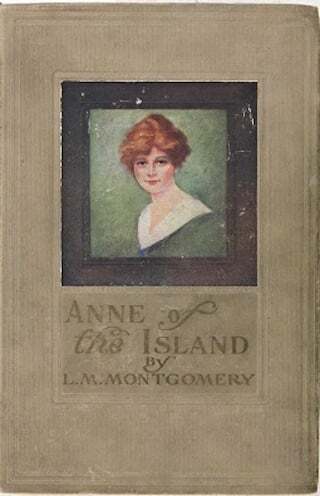
1915 cover of Anne of the Island
. . . . . . . . .
“All life lessons are not learned at college,” she thought. “Life teaches them everywhere.”
. . . . . . . . .
“I’ve loved you ever since that day you broke your slate over my head in school.”
. . . . . . . . .
“I wouldn’t want to marry anybody who was wicked, but I think I’d like it if he could be wicked and wouldn’t.”
. . . . . . . . .
“I do know my own mind,” protested Anne. “The trouble is, my mind changes and then I have to get acquainted with it all over again.”
. . . . . . . . .
“I love them [cats], they are so nice and selfish. Dogs are TOO good and unselfish. They make me feel uncomfortable. But cats are gloriously human.”
. . . . . . . . .
“I feel as if I had opened a book and found roses of yesterday sweet and fragrant, between its leaves.”
. . . . . . . . .
“It will come sometime. Some beautiful morning she will just wake up and find it is Tomorrow. Not Today but Tomorrow. And then things will happen … wonderful things.”
. . . . . . . . .
“I have a dream,” he said slowly. “I persist in dreaming it, although it has often seemed to me that it could never come true. I dream of a home with a hearth-fire in it, a cat and dog, the footsteps of friends — and you!”
. . . . . . . . .
“There is so much in the world for us all if we only have the eyes to see it, and the heart to love it, and the hand to gather it to ourselves–so much in men and women, so much in art and literature, so much everywhere in which to delight, and for which to be thankful.”
. . . . . . . . .
“I don’t want sunbursts or marble halls, I just want you.”
“But I’ll have to ask you to wait a long time, Anne,” said Gilbert sadly. “It will be three years before I’ll finish my medical course. And even then there will be no diamond sunbursts and marble halls.”
More about Anne of the Island
Full text on Project Gutenberg Reader discussion on Goodreads “Anne of the Island Never Fails to Inspire Me” Listen on LibrivoxThe post Anne of the Island by L.M. Montgomery (1915) appeared first on Literary Ladies Guide.
May 27, 2023
The Friendship & Correspondence of George Sand & Gustave Flaubert
The friendship and correspondence of George Sand (1804 – 1876) and Gustave Flaubert (1821 – 1880) form a fascinating and valuable chapter in literary history.
Their letters are vignettes of the tumultuous time of the 1848 revolution, the Franco-Prussian War, and the fall of the Paris Commune. They’re also discussions of the challenges of writing, the world of theater and politics, and the whims of family and friends.
In Flaubert-Sand, The Correspondence (1993), the late translators and researchers Francis Steegmuller and Barbara Bray opened this 19th-century world to readers. Presenting four hundred letters from earlier books, libraries, and private collections, this volume has extensive footnotes, excerpts from Sand’s diaries, and chronologies for context.
Like many friendships, theirs started by chance. The two met causally in Paris at the theater and Flaubert invited Sand to the famous dinners at Magny (a small restaurant in the Left Bank of Paris) a for writers organized by the publishers Goncourt and Sainte-Beuve. Sand would be the only woman attending. By then, she was a well-known novelist and playwright.
. . . . . . . . .
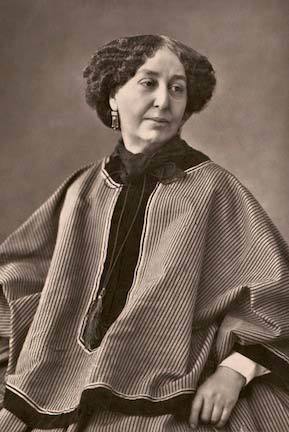
Learn more about George Sand
. . . . . . . . . .
Sand had watched Flaubert’s popularity ascend, but it was the controversy that arose after the publication of Madame Bovary that raised her ire.
When the novel was published in 1857, the government charged the author and publisher with immorality because the work was “grossly offending against public morality, religion, and decency.” The trial, which lasted a year, ended in acquittal. Sand felt her colleague had been dealt with unfairly.
When Flaubert’s next novel, Salammbo, was published in 1862, the reviews were lukewarm. He sent Sand a copy and she wrote an enthusiastic article for the Parisian newspaper La Presse. In turn, he told a friend of her kindness and probably wrote her a letter of thanks. Although it doesn’t survive, Sand’s response does:
January 1863
Mon cher frère,
Don’t thank me for having done my duty. When the critics do theirs I’ll be quiet: I’d rather create than judge. But all I’d read about Salammbo before I read Salammbo itself was unfair or inadequate, and I’d have thought it either cowardly or lazy — they’re much the same thing — to be silent. I don’t mind adding your enemies to my own. A few more one way or the other. . .”
What followed was a thirteen-year epistolary friendship not only benefitting the authors, but also future readers, writers, and historians. It’s our fortune that so many of these letters have survived.
One of the sources for the Steegmuller book was The Correspondence of Gustave Flaubert – George Sand, edited by Alphonse Jacobs (Flammarion, 1981). He wrote in the preface:
“It has often been said that this is the finest correspondence of the past century, perhaps the finest of all time. Everyone has emphasized its historical importance, its great place in the literary, philosophical and political ideas of the nineteenth century. We are told all writers and students should be familiar with it as part of their education; and that today’s generations could profit from the moral lessons it provides.”
. . . . . . . . . .
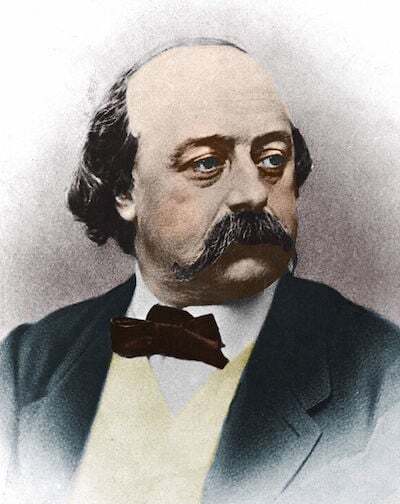
Gustave Flaubert
. . . . . . . . . .
Flaubert and Sand were seventeen years apart – he was the same age as her son Maurice – and they couldn’t have been more different in temperament and style.
Flaubert was prone to melancholy and complaining; ill health (he had syphilis and probably epilepsy). He hated exercise and was a curmudgeon who didn’t suffer fools. He looked down on the bourgeoisie (though he was the son of a doctor) and their social-climbing, materialistic ways. He lived in a cold and drafty home called Croisset, south of Rouen on the Seine River, where he resided with his widowed mother (who paid most of the bills) and an orphaned niece.
Flaubert’s father had wanted him to study law, but as a young man, he had other ideas. He traveled around the Middle East, and when he returned, he began to pursue literature. For ten years, he wrote fiction without getting published and his family worried about his ability to make a living.
There had been lovers, particularly the writer Louise Colet, with whom he had a torrid affair that ended badly. She wanted to marry and have a child; he didn’t. Flaubert was no a stranger to brothels.
George Sand — a hardy sensualist
Sand, born Amantine Lucile Aurore Dupin, was the daughter of an officer in Napoleon’s Italian army and a peasant woman. Through various relatives, she was related to royals and when her parents passed away, her grandmother raised her on her estate, called Nohant, in the old Berry province of France.
Growing up at Nohant gave Sand a true love for country life and nature. At age thirteen, she was sent to a convent in Paris for two years; her grandmother then decided she didn’t want her granddaughter to become a nun. Upon returning home, she continued her schooling with a tutor who had formerly been an abbé.
Soon after her grandmother’s death, she married the son of a baron who fathered her two children. He also had a taste for maids and drink, and the couple separated permanently.
In Sand’s Paris years, she embraced the bohemian life, wearing trousers, smoking cigars, and writing articles promoting her youthful views on socialism; she eventually co-authored a novel and then wrote Indiana (1832) on her own.
Sand’s love life was colorful as well: Merimee, Musset, Chopin. . . By the time she and Flaubert became friends, she was happily ensconced at Nohant with her son and his family, at the beckon of beautiful gardens.
Very different kinds of writers
As writers, Flaubert and Sand were also a study in contrasts. Flaubert would often take a week to write a page. Andre Maurois, in his biography Lelia, The Life of George Sand, (1953), wrote:
“Flaubert would lie awake all night sweating over a single word. Sand would knock off thirty pages in the same period, and start on a new novel a minute after finishing the one she had been working on.”
Flaubert wrote for perfection, the ethereal world of literature, and not autobiographically. Sand wrote for money, often using her home as a setting.
Over the course of their lives, Sand would publish seventy-two novels and thirteen plays. Flaubert would publish thirteen novels as well as short stories. His literary realism had an enormous influence on the likes of Maupassant, Zola and set the path for modern fiction.
Devoted correspondents with a deep friendship
In their letters, Flaubert would address Sand as “Dear Master “or “Dearly Beloved Master.” She dubbed him “My Monk” or “My Troubadour.”
In 1866 Flaubert wrote to Sand after her visit to Croisset:
Everybody here is devoted to you. Under what star were you born thus to combine in your person so many rare and diverse qualities? I do not know how to describe my feelings for you. All I do know is that you have awoken in me an affection of a very special kind, such as I have never, till now, felt for anyone. We get on well, don’t we? It was so nice seeing you . . . I too, wonder why I am so fond of you? Is it because you are a great man or a charming creature? I really cannot say . . .
And her response to him, several months later in 1867:
You have not, like me, an itching foot ever eager to be off. You live in your dressing-gown — the great enemy of freedom and the active life …
And a few weeks later:
I have never ceased to wonder at the way you torment yourself over your writing. Is it just fastidiousness on your part? There is so little to show for it … As to style, I certainly do not worry myself, as you do, over that. The wind bloweth as it listeth through my old harp.
‘My’ style has its ups and its downs, its sounding harmonies, and its failures. I do not, fundamentally, much mind, so long as the ‘emotion’ comes through. But it is no use my trying to screw it out of myself. It is the ‘other’ who sings through me, well or badly, as the case may be. When I begin to think of all that, I get frightened, and tell myself that I count for nothing, for nothing at all. . .
Let the wind blow a little through ‘your’ strings. I think you fret about it all much more than you should, and that you ought to let the ‘other’ have his say more often. Everything would work out all right, and it would be a great deal less exhausting for you …
Sand played the idealistic mother hen to Flaubert’s angry suffering soul. They tried to change each other’s opinions, and though neither ever truly succeeded, the discussions were always lively. Sand lectured Flaubert on his unhealthy attitude and lifestyle, even once suggesting he marry.
Flaubert, the good friend and errant “son” would take this in stride and defend himself. Even so, these weren’t mere diatribes. The two talents wrote with style, passion, empathy, and pride; the leitmotif of their correspondence was respect and love, even extending to family.
George Sand on the problem of writing in a letter from December 1875:
… you’ll go in for desolation, I’ll wager, while I go in for consolation. I don’t know what our destinies stem from. You watch them go by, analyze them, but abstain, literarily, from judging them. You confine yourself to describing them, carefully and systematically concealing your own feelings. And yet those feelings can be seen through what you write, with the result that you make your readers sadder than they were before.
I’d like to make them less unhappy. I can’t forget that my own conquest of despair was due to my will, and to a new way of seeing things that is completely opposite to the view I once had.
I know you disapprove of personal attitudes entering into literature. But are you right? Isn’t your stand due to lack of conviction rather than aesthetic principle? One can’t have a philosophy in one’s soul without its showing through …
Flaubert responded on New Year’s Day, a few weeks later:
I don’t ‘go in for desolation’ wantonly: please believe me! But I can’t change my eyes! As for my ‘lack of conviction’, alas! I’m only too full of convictions. I’m constantly bursting with suppressed anger and indignation.
But my ideal of Art demands that the artist reveal none of this, and that he appear in his work no more than God in nature. The man is nothing, the work is everything! This discipline, which may be based on a false premise, is not easy to observe. And for me, at least, it’s kind of a perpetual sacrifice that I make to good taste.
Some of the letters I enjoyed most included descriptions of visits to one another’s homes. The get-togethers at Croisset sound like pajama parties: the authors would stay up all night, smoking, reading their works to one another, and raiding the kitchen.
In the daytime, they’d go on long walks (despite Flaubert’ physical laziness) and visit the sites in Rouen. Flaubert’s mother cherished Sand. His visits to Nohant were a swirl of parties, puppet shows, Sand’s beloved grandchildren afoot, other visitors like Turgenev, and walks in the garden.
Conclusion
As I neared the end of the Steegmuller book, I dreaded the end of this historic friendship. George Sand died at Nohant in June 1876 at the age of seventy-two, after a brave, painful battle with stomach cancer. She was buried in the drizzling rain with Flaubert at her graveside. Part of the eulogy was a poem written by Victor Hugo. Flaubert later wrote to her son Maurice, “It seemed to me that I was burying my mother a second time.”
At the time of Sand’s death, he was halfway through a story called “A Simple Heart,” which he was composing in tribute to her.
The subsequent years weren’t kind to Flaubert. His mother died, and his niece’s speculating husband racked up enormous debt so he gave up his inheritance to help her. Lonely, sad, and struggling with a myriad of health and money problems, Flaubert died of a stroke in May 1880, leaving behind the unfinished novel Bouvard and Pecuchet. He is buried with his family in a graveyard in Rouen. He was just fifty-nine years old.
. . . . . . . . .
Contributed by Tyler Scott, who has been writing essays and articles since the early 1980s for various magazines and newspapers. In 2014 she published her novel The Excellent Advice of a Few Famous Painters. She lives in Blackstone, Virginia where she and her husband renovated a Queen Anne Revival house and enjoy small town life.
More by Tyler Scott on this site:
A Tribute to Claudia Emerson, Poet and Friend Anita Brookner, Author of Hotel du Lac The Life and Letters of Madame de SévignéSources:
Flaubert-Sand, The Correspondence, Translated by Francis Steegmuller and Barbara BrayLelia, The Life of George Sand by Andre MauroisThe essay “An Unsimple Heart” by Judith Thurman, Cleopatra’s Nose, 39 Varieties of DesireThe post The Friendship & Correspondence of George Sand & Gustave Flaubert appeared first on Literary Ladies Guide.
May 24, 2023
The Prime of Miss Jean Brodie by Muriel Spark (1961): Opposing Reviews
Scottish-born Dame Muriel Spark (1918 – 2006) was a prolific novelist, short story writer, poet, and biographer. The Prime of Miss Jean Brodie (1961) would become her best-known and most enduring work. Here are two opposing reviews of the novel from when it was first published.
The tale of a middle-aged Edinburgh schoolteacher was immortalized in the 1969 film starring a young Maggie Smith, now is considered a cinematic classic. It was also adapted as a Broadway play.
When the slim novel first came out, it received generally excellent reviews, but they weren’t universal, as you’ll see in the somewhat dour review that ran in the London Observer.
The positive view of the novel prevailed, as it has found its way onto “Best 100 novels” of all time lists on both sides of the Atlantic, including this one in The Guardian, which called it “the soul of wit and brevity.”
. . . . . . . . . . .
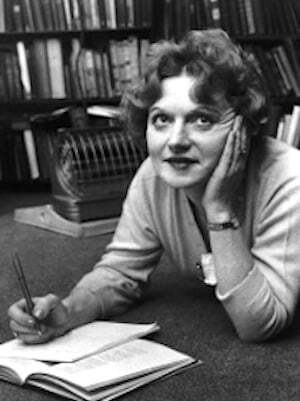
Learn more about Muriel Spark
. . . . . . . . . . .
The review by E. J. Hillen in The Gazette (Montreal, Quebec, Canada), Jan 6, 1962, review of The Prime of Miss Jean Brodie deemed “Unreservedly Recommended”:
A penetrating and sparkling imagination has produced a story set in Edinburgh in the 1930s about a schoolmistress — Miss Jean Brodie— and her favorite six pupils —“The Brodie Set.” It is a delightful. witty story and brilliantly written.
The six girls are immediately recognizable as Miss Brodie’s pupils — they are vastly informed on many subjects entirely irrelevant to the authorized curriculum of the girls’ day school they attend.
Miss Brodie had the girls in Junior school, but her powerful influence persists. At sixteen, they remain unmistakably Brodie. They are famous throughout the school, that is, they’re held in suspicion. Why? Because as Miss Brodie says: “It is because you are mine. I mean of my stamp and cut, and I am in my prime.”
Six years before, when the girls were ten, Miss Brodie told them: “I am putting old heads on your young shoulders, and all my pupils are the creme de la créme.”
And she could do it, because: “These are still the years of my prime. It is important to recognize the years of one’s prime, always remember that.”
Miss Brodie has original ideas about the education of her pupils as well as of her own place in the scheme of things.
A typical lesson with Miss Brodie goes as follows. Miss Brodie speaking:
“Hold up your books, prop them up in your hands in case of intruders. We are doing our history lesson … our … poetry … English Grammar.
… Meantime I will tell you about my last summer holiday in Egypt … I will tell you about care of the skin, and of the hands … about the Frenchman I met on the train to Biarritz … and I will tell you a little of my life when I was younger than I am now, though six years older than the man himself. He fell on Flanders Field.”
That is Miss Brodie in her prime, in those anxious pre-war years growing up with her girls in a world that contains the ogre of fascism as well as love.
The Prime of Miss Jean Brodie is unreservedly recommended as some of the best and most original writing in English on either side of the Atlantic.
. . . . . . . . . . .
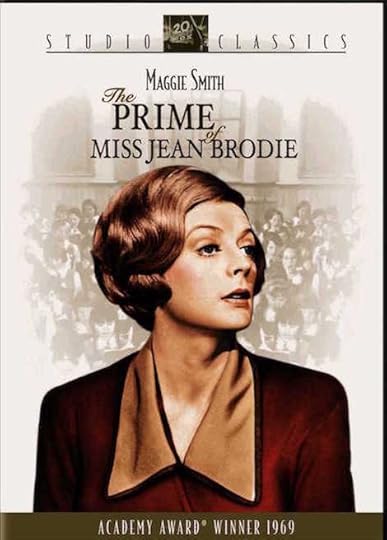
Original trailer of the 1969 film adaptation of
The Prime of Miss Jean Brodie
. . . . . . . . . . .
The review by John Davenport in The Observer (London, England), October 29, 1961, review titled “Treachery in the Classroom”:
Muriel Spark is mercifully free from snobbishness, the English disease (pox britannica); a moralist, but coolly detached.
The Prime of Miss Jean Brodie, her sixth novel and eighth book, has been triumphantly published in the New Yorker. Mrs. Spark is indeed an author to bc grateful for in our plutonian age. It is sad, therefore, that it should be a failure; a comparative failure only, but a disappointment by her own high standards.
Miss Jean Brodie is an Edinburgh schoolmistress: the time is the early thirties. Looming fascism is on thc horizon. Miss Brodie, with her dark Roman profile, is an eccentric proudly cherished by her favourite pupils: Sandy, Monica, Mary, Rose, Eunice, and Jenny — “the Brodie set.”
Her standards. are high; they must carry themselves like Sybil Thorndike, appreciate the superiority of Giotto to Leonardo da Vinci; they must in her favourite phrase, the crème de la crème.
The form of the novel is that of a set of cyclic variations with Miss Brodie as the centre. The weakness of it lies in the fact that there is insufficient development: there are repetitions and evasions; and one feels that the types are over-simplified for the complex moral situation.
The central character is simply not strong enough or deep enough. Even her eccentricities are familiar. Mrs. Spark’s dread of unnecessary amplification, admirable in itself, has carried her too far. Only one of her pupils, the repellent Sandy, is fully created.
Miss Brodie has had love affairs with the art master and the music master, and the crux of the book is her betrayal to the authorities, who have always been suspicious of her unorthodoxy. Which of her favourites is the Judas? Like “an enigmatic Pope” Sandy says, “If you did not us it is that you could have been betrayed by us.”
By this time Sandy is old enough — there are odd gaps in the time sequence — to have had a liaison with the art master herself with Miss Brodie’s knowledge and even approval.
It is, of course, Sandy who is the Judas. She becomes a nun. It is difficult to believe her vocation.
Was it an act of expiation? She writes a philosophical treatise that makes her world famous. A visiting journalist asks of her, what were the main influences of her schooldays — “Was it Calvinism?”
After a short silence she replies that there was a Miss Jean Brodie in her prime. This is fine, but it remains mysterious. I have clearly missed the point of it all; the mystery fails to fascinate; I need more data. Less obtuse readers will doubtless find Miss Brodie as compelling as her pupils did. For mc she remains a wraith.
More about The Prime of Miss Jean Brodie by Muriel SparkThis article has a detailed plot summary and list of characters .Here’s another good, brief plot summary .The original book in full in The New Yorker, October 14, 1961An insightful analysis of The Prime of Miss Jean Brodie in the GuardianThe post The Prime of Miss Jean Brodie by Muriel Spark (1961): Opposing Reviews appeared first on Literary Ladies Guide.



